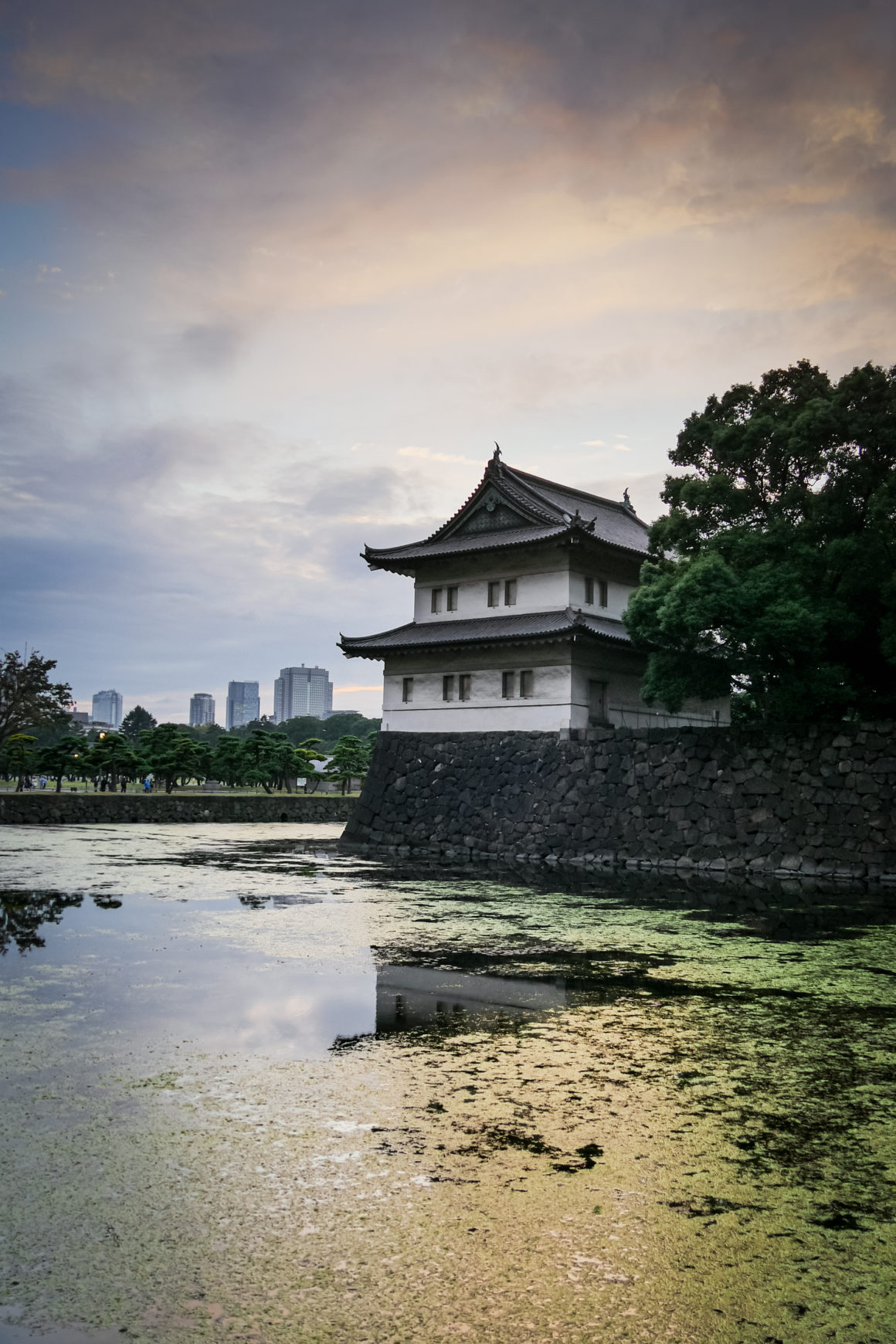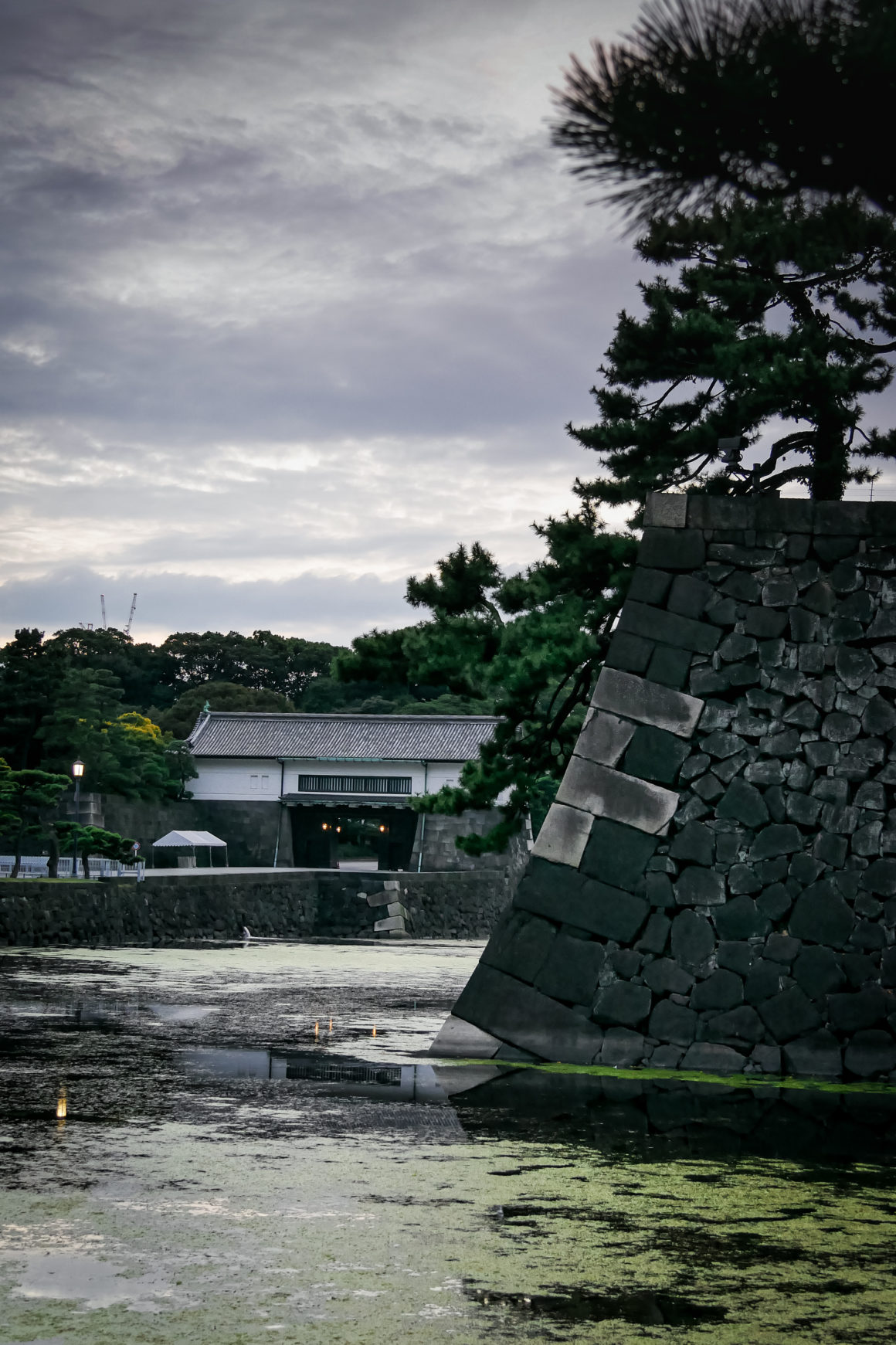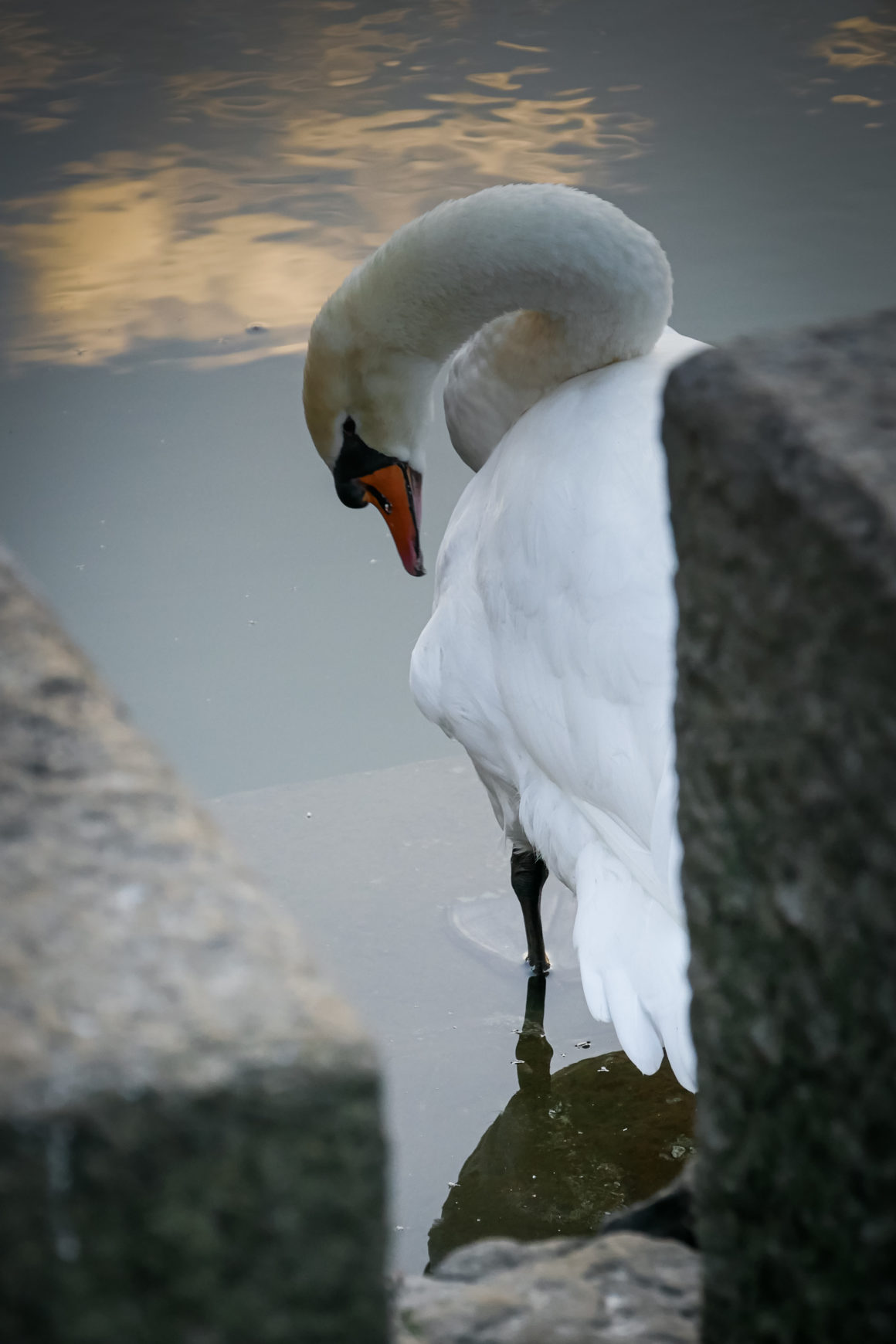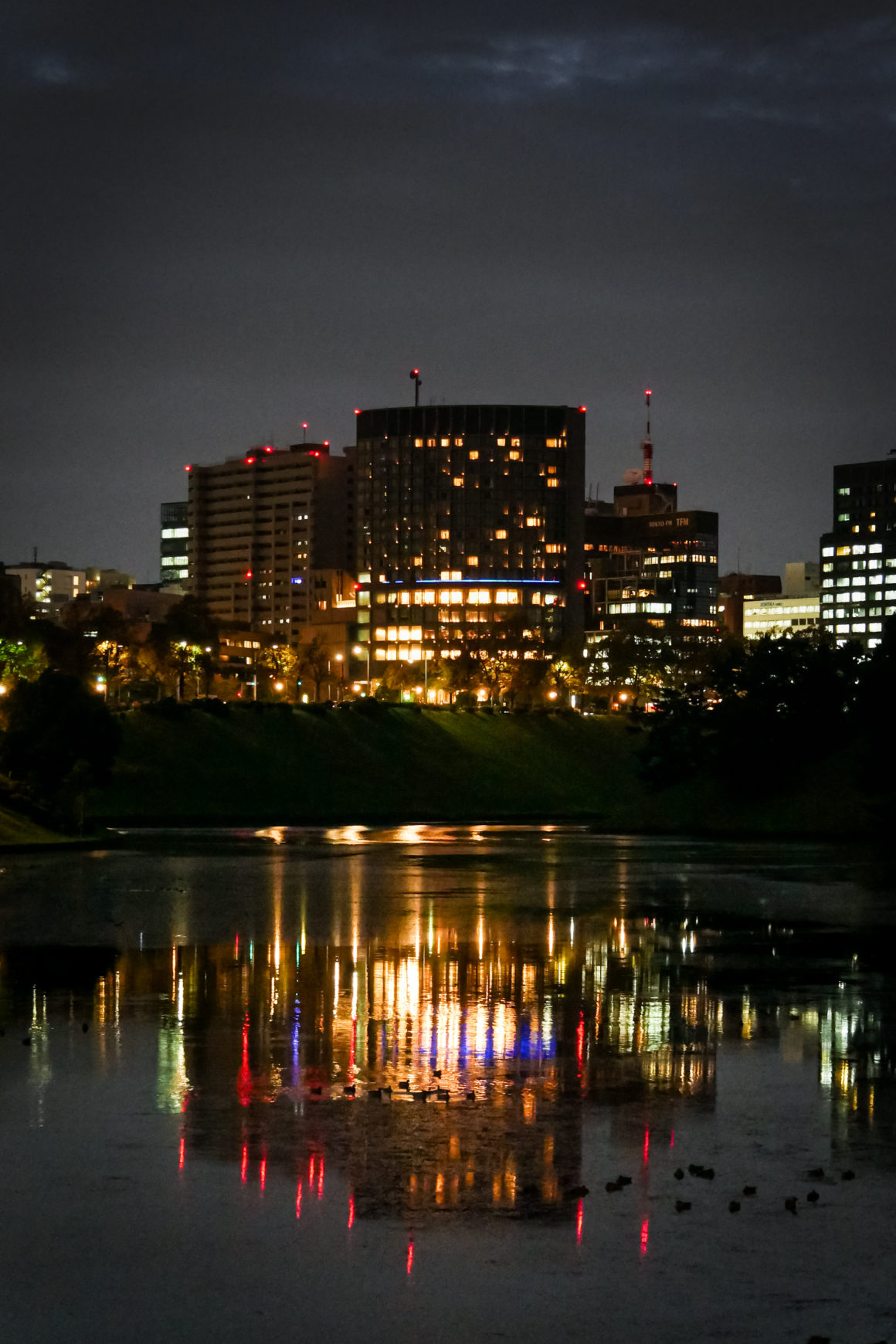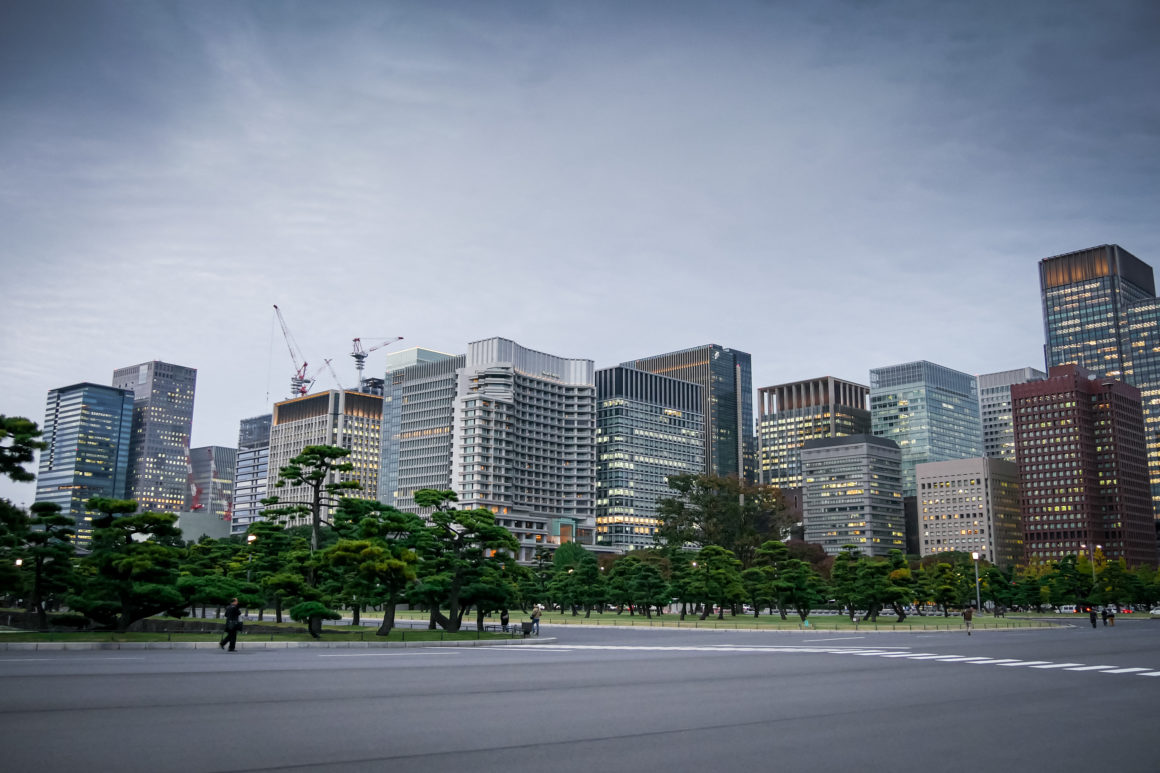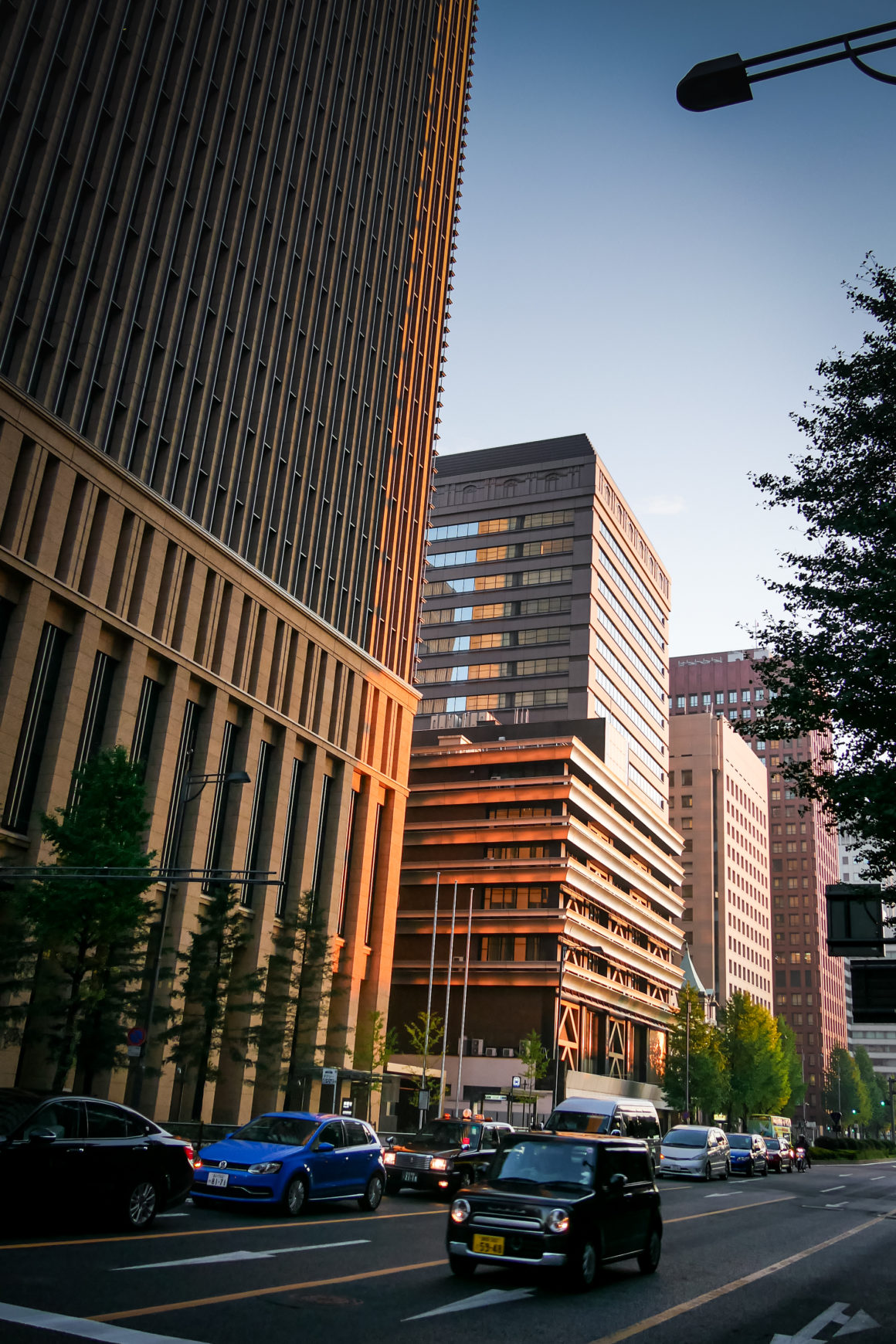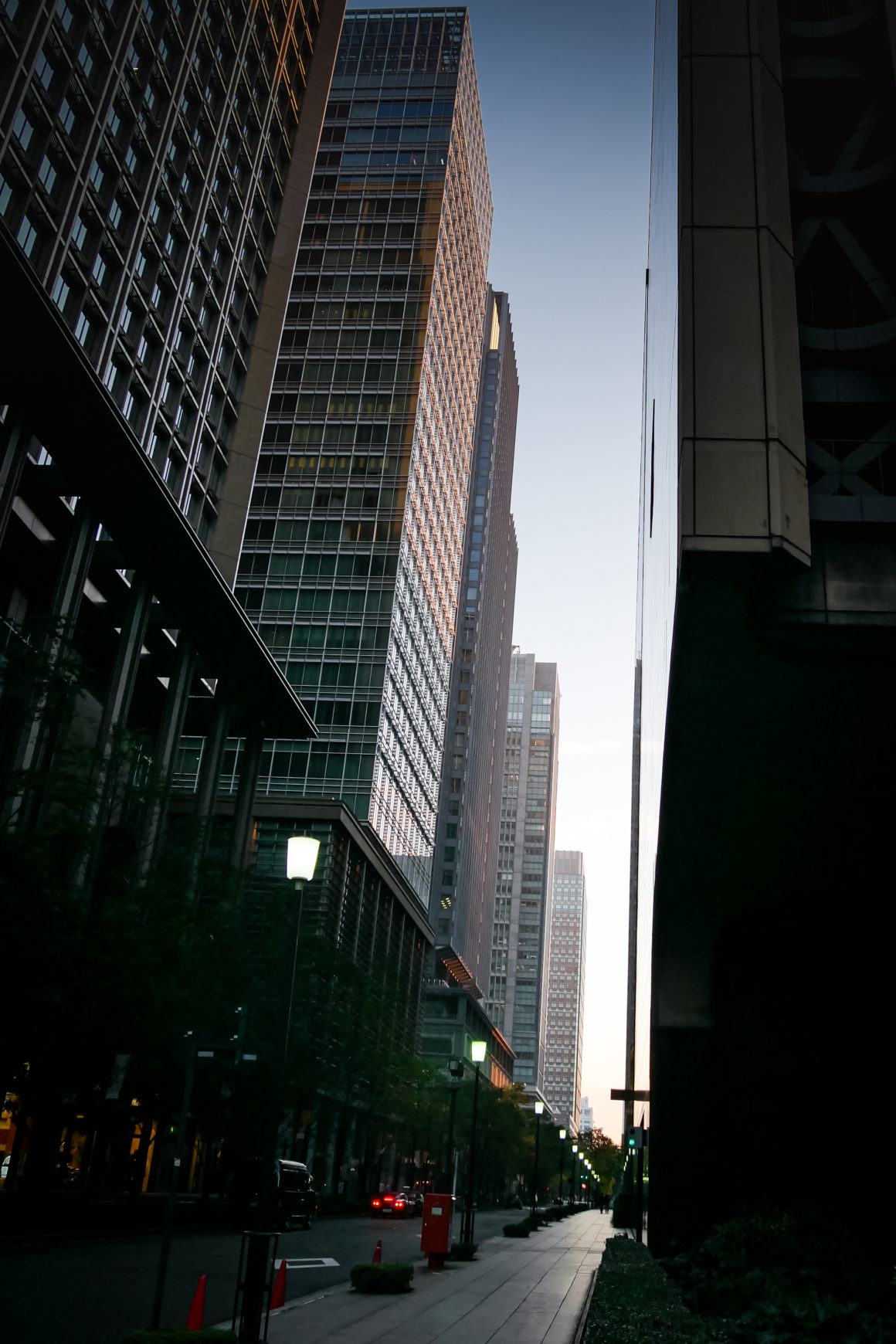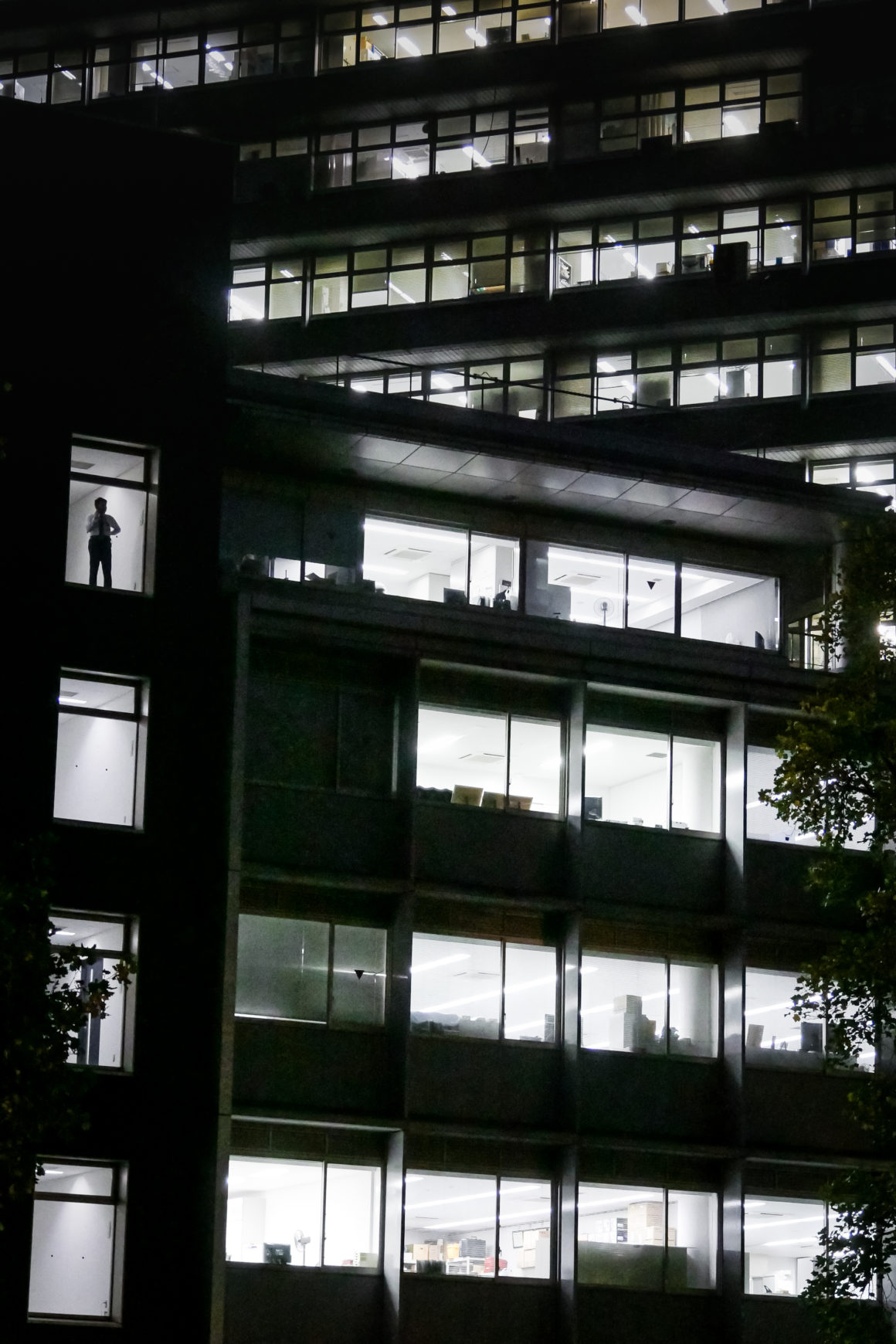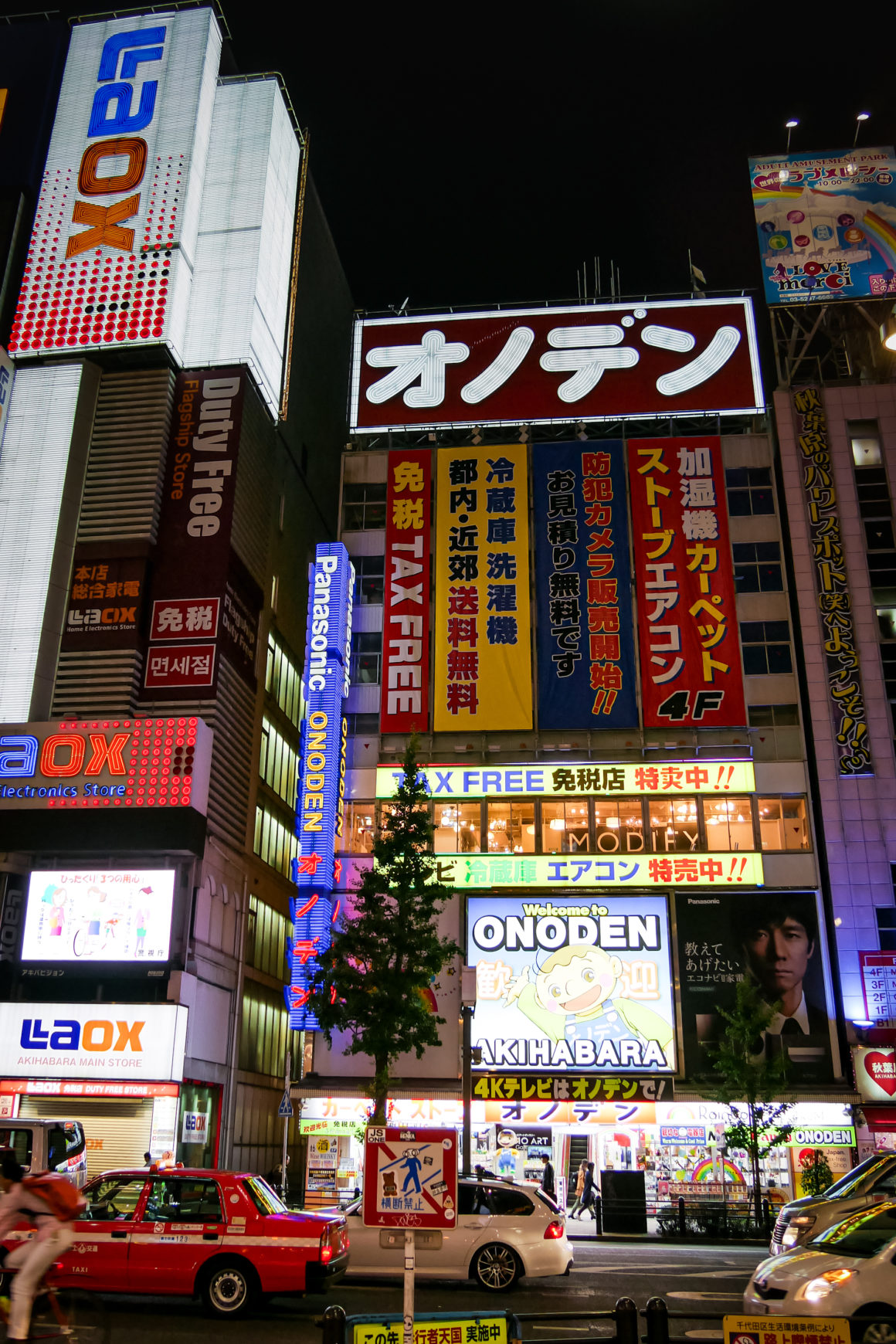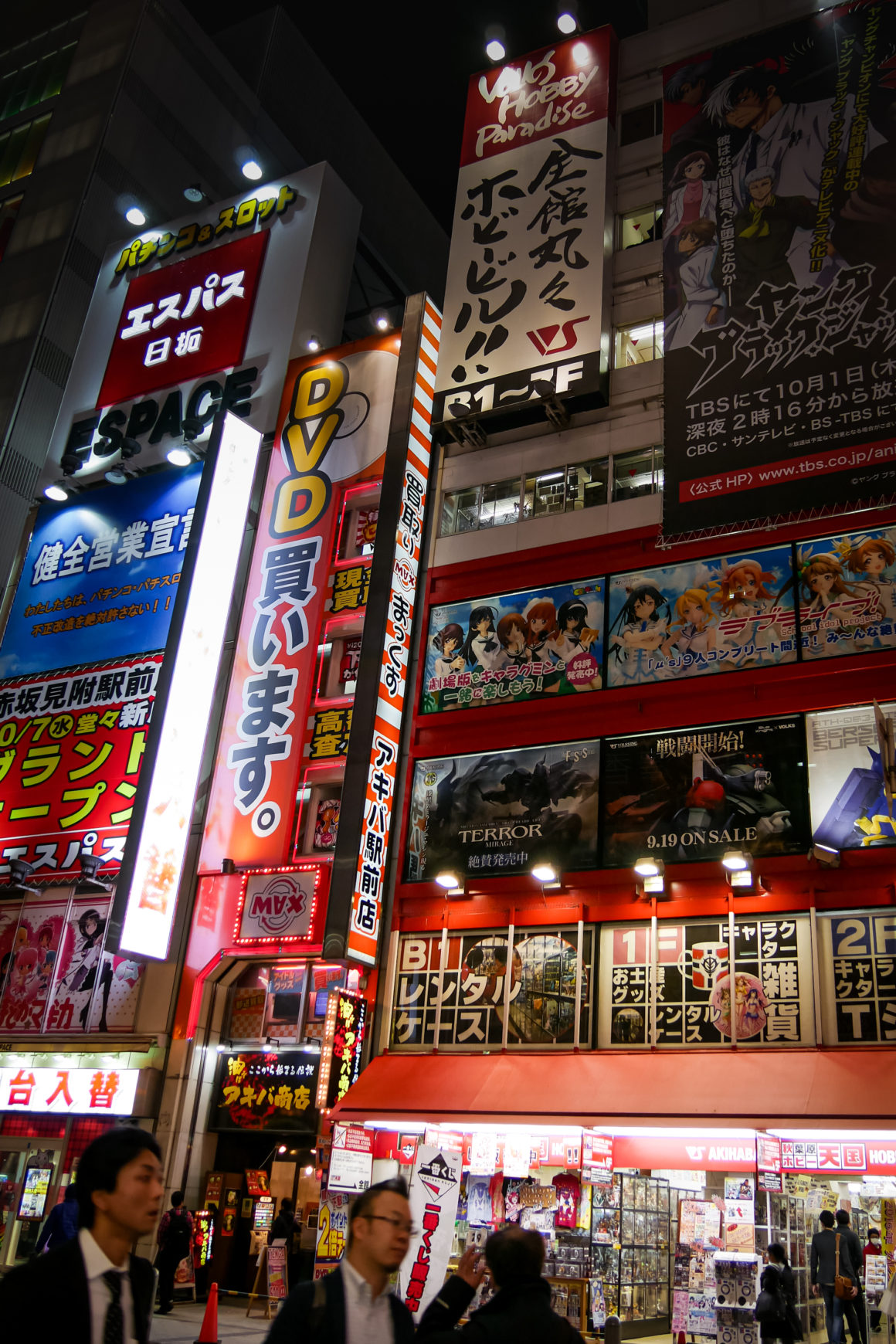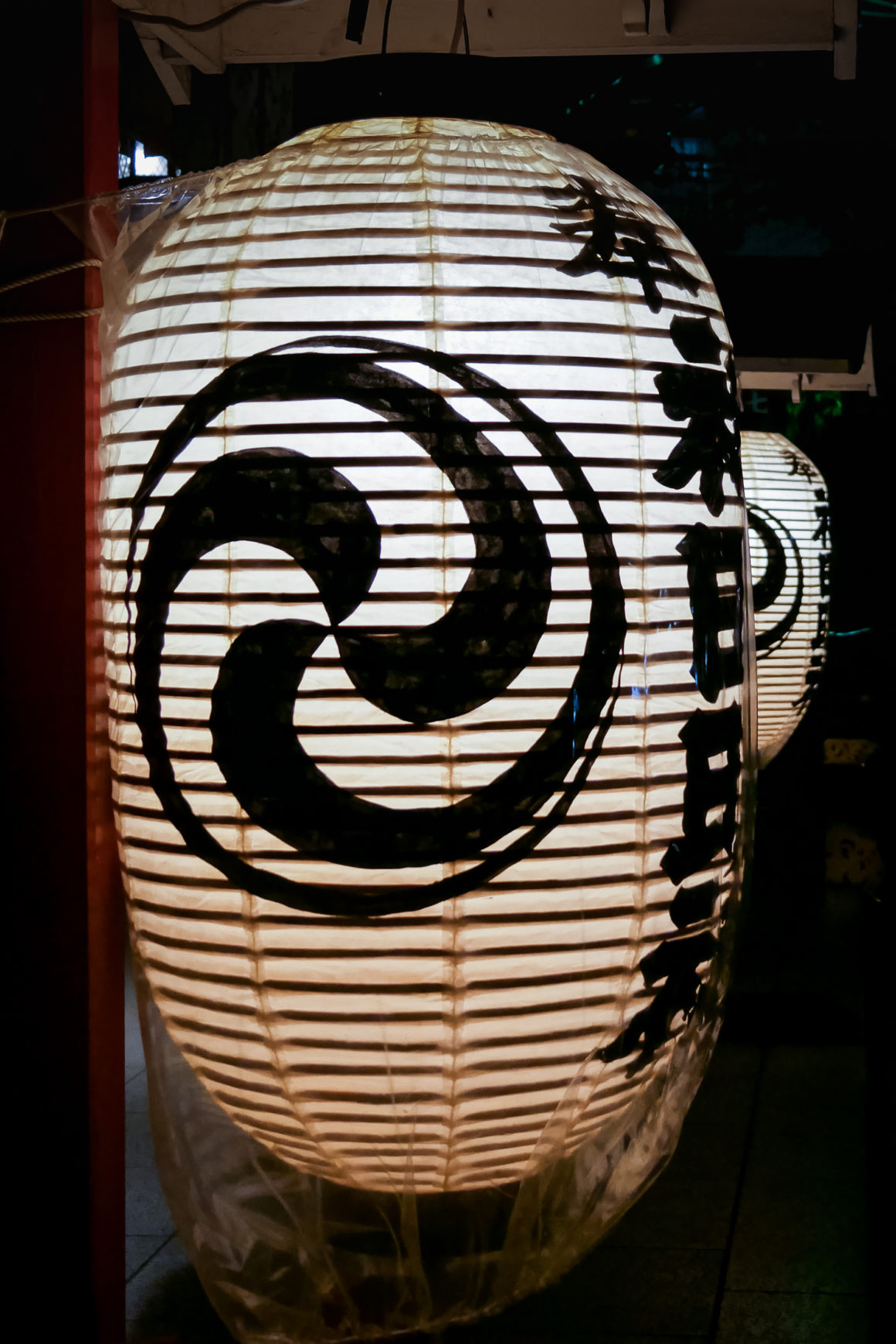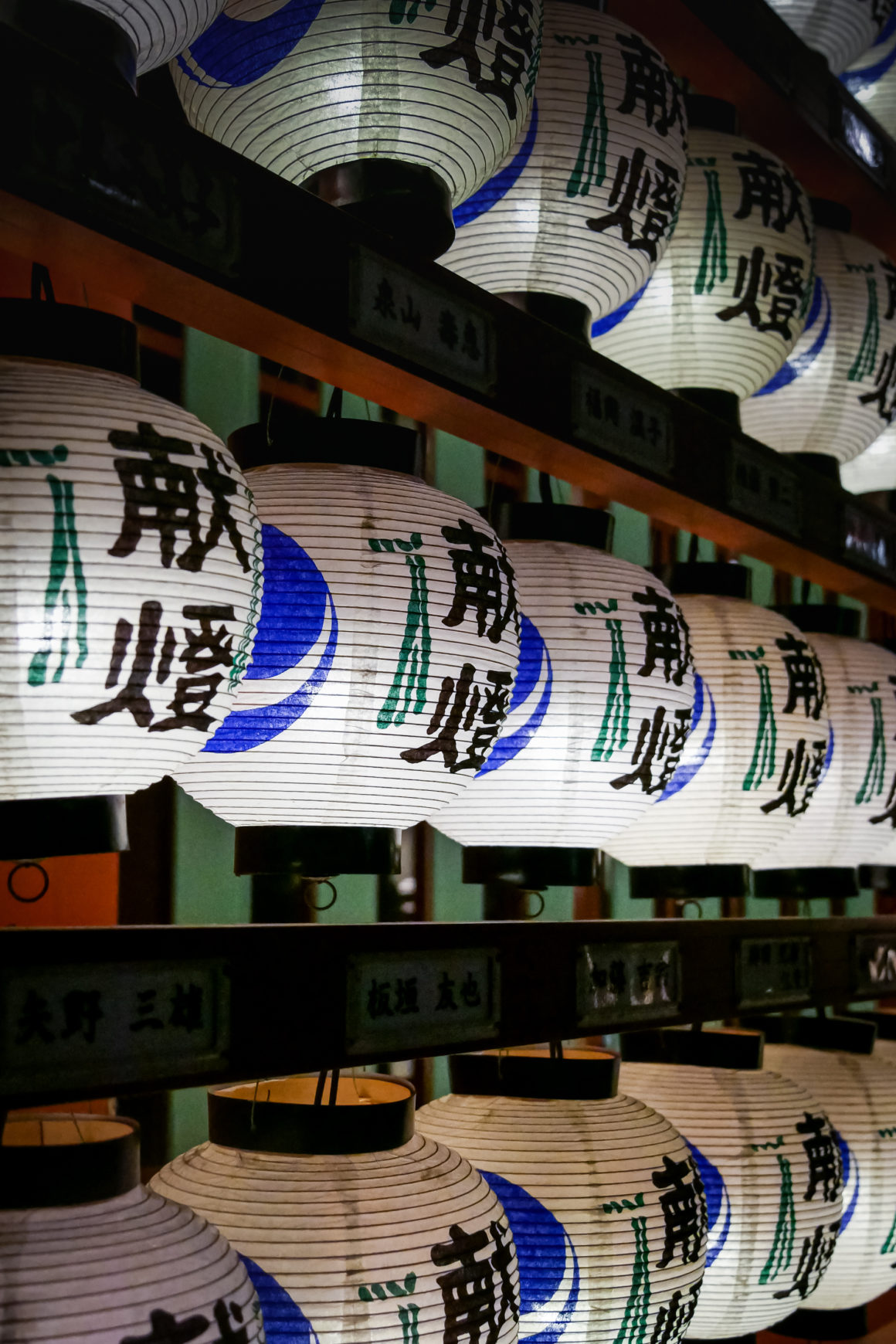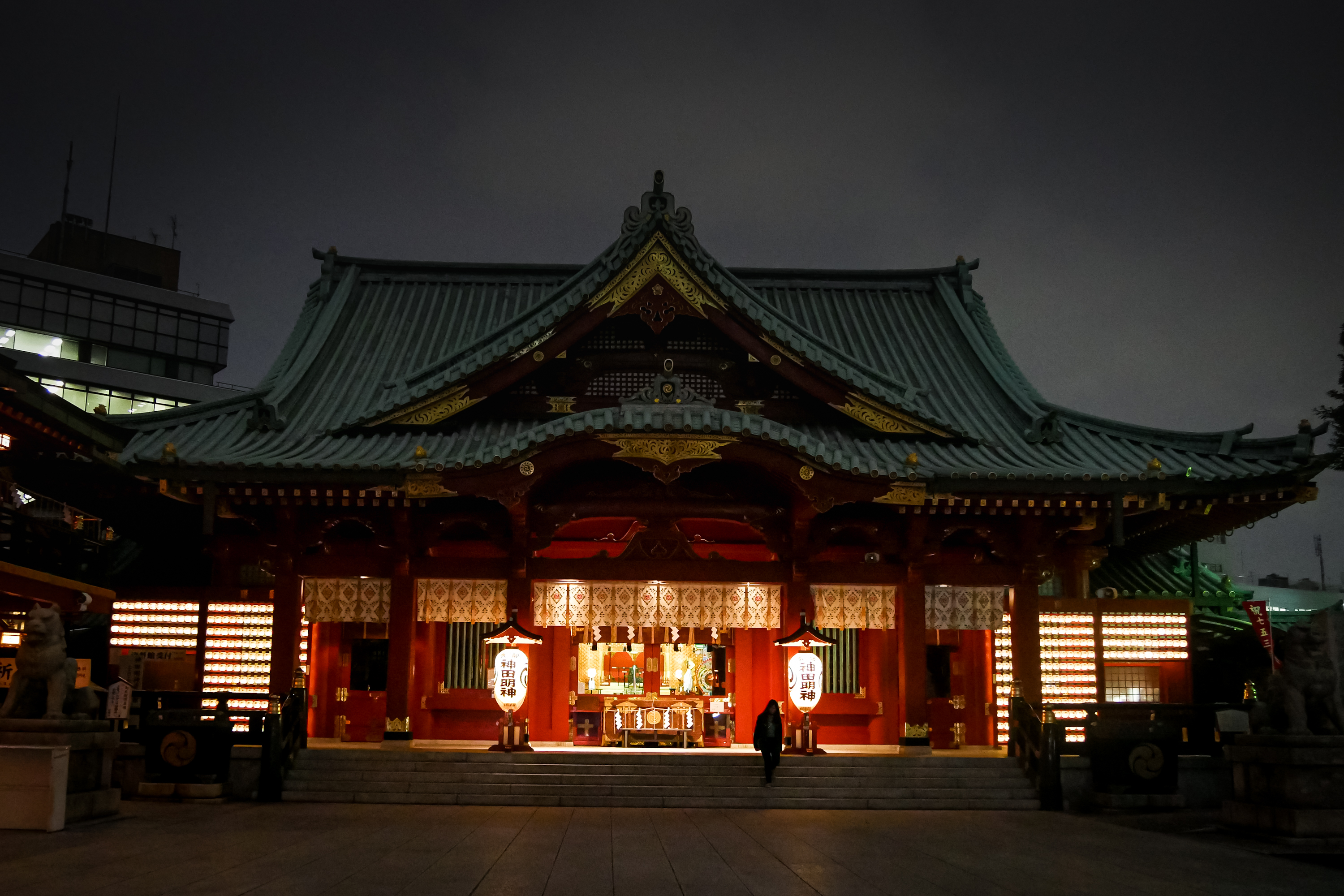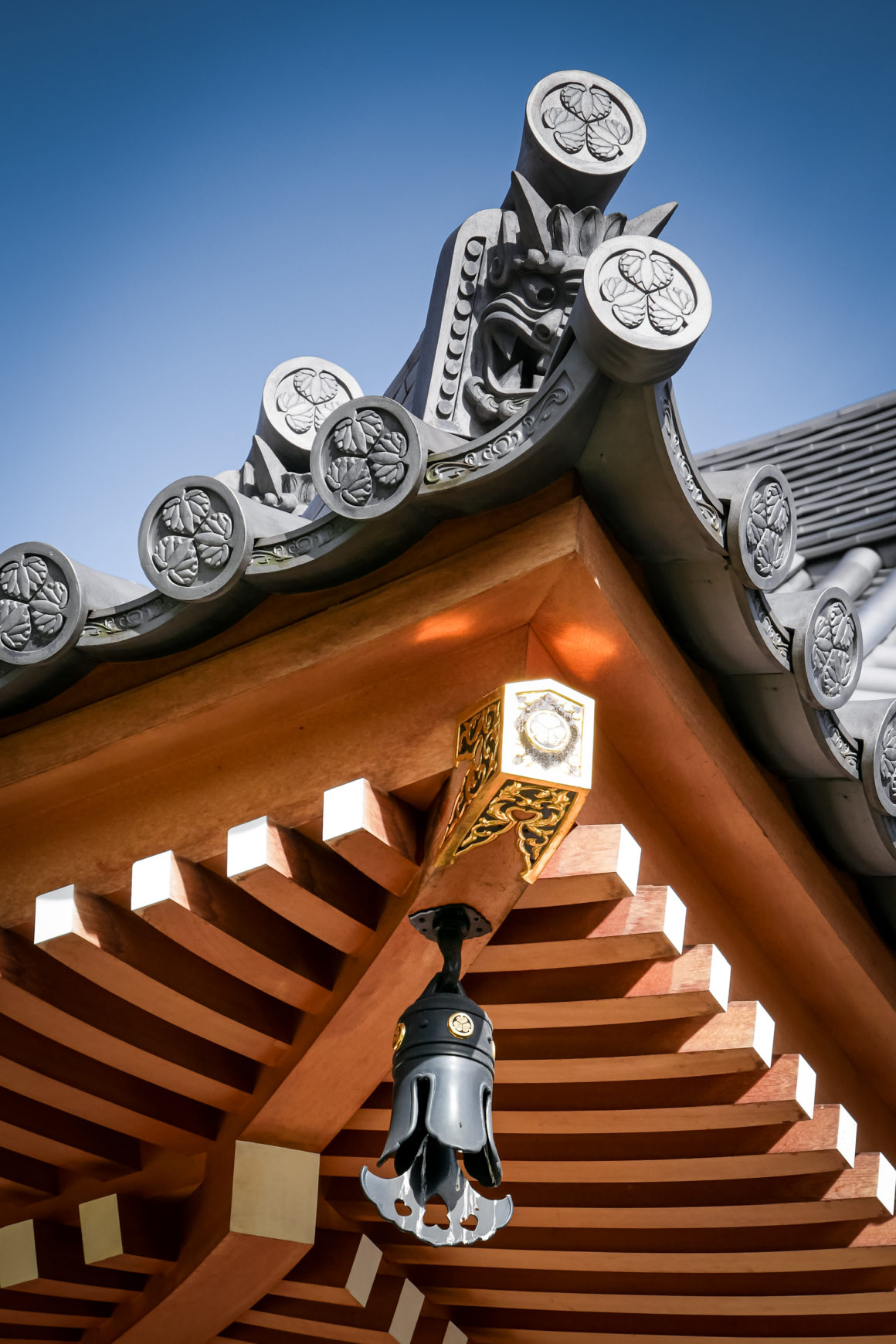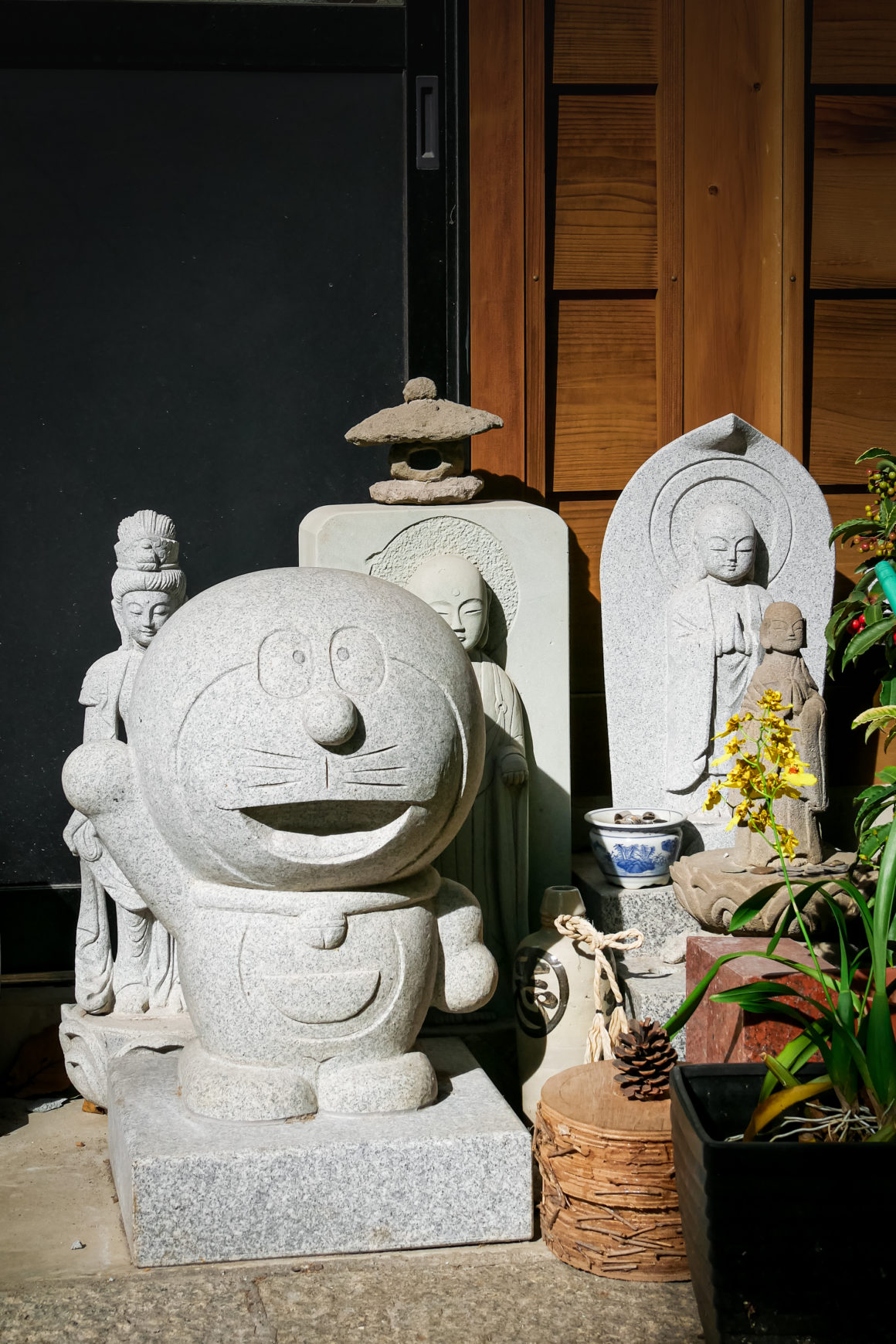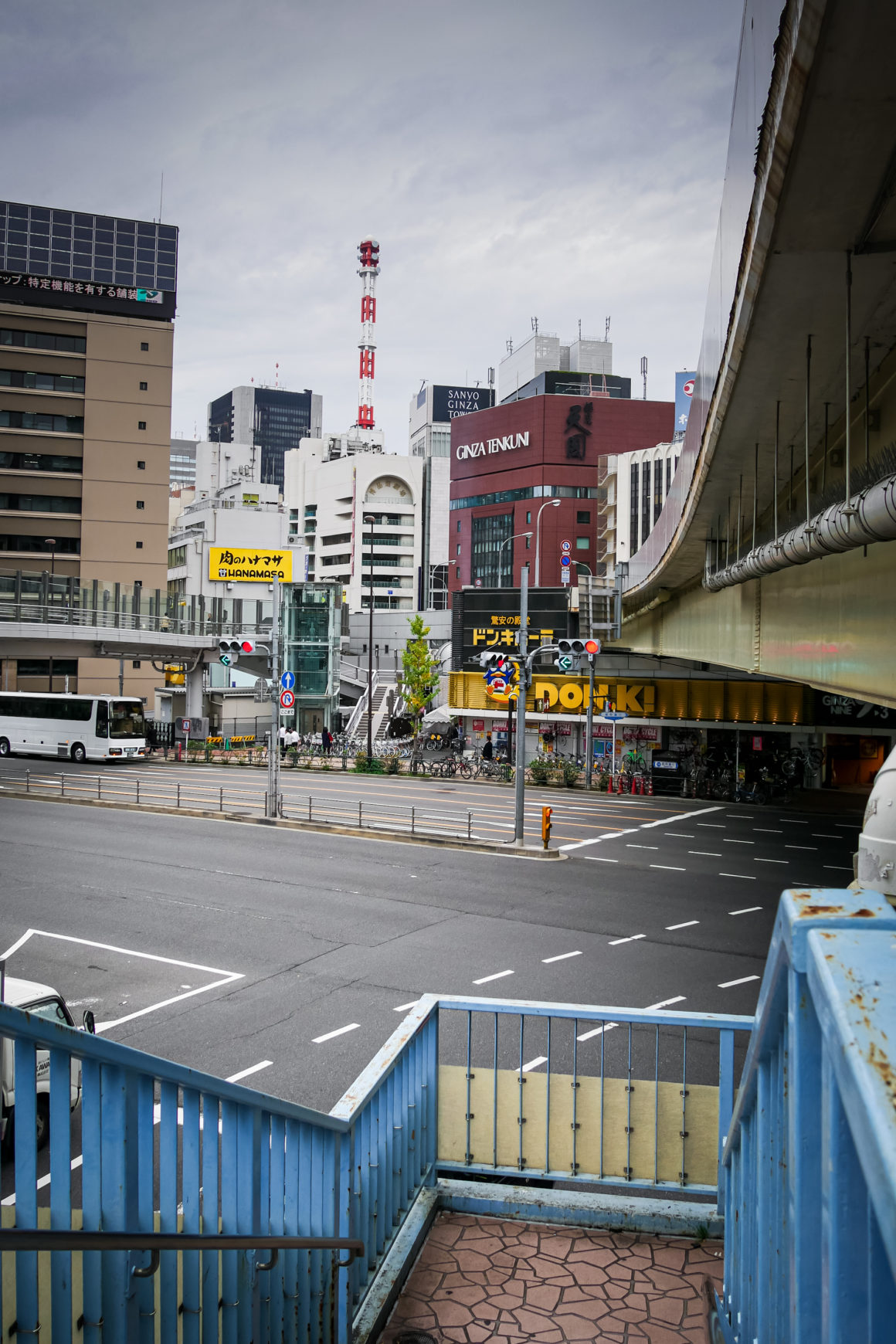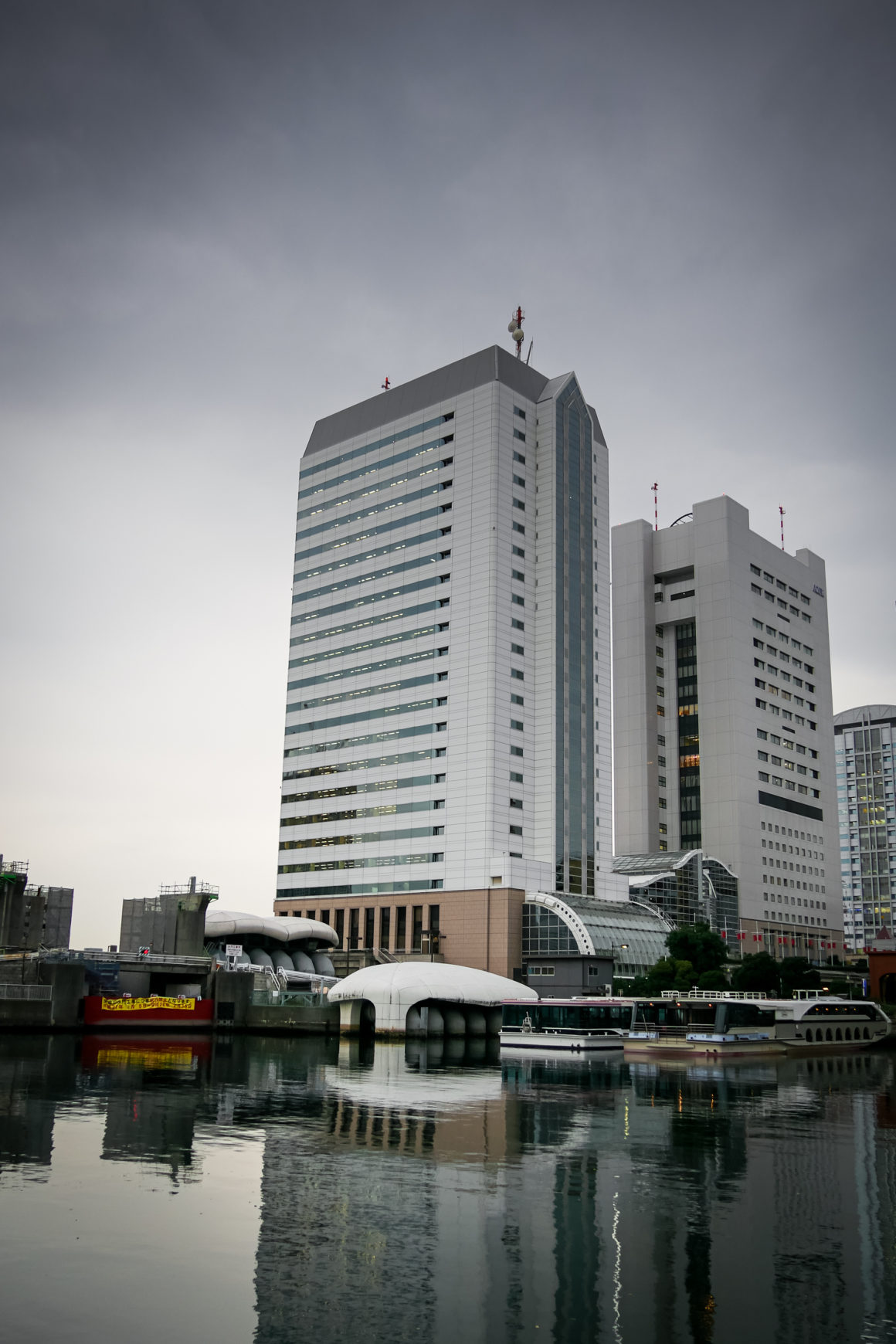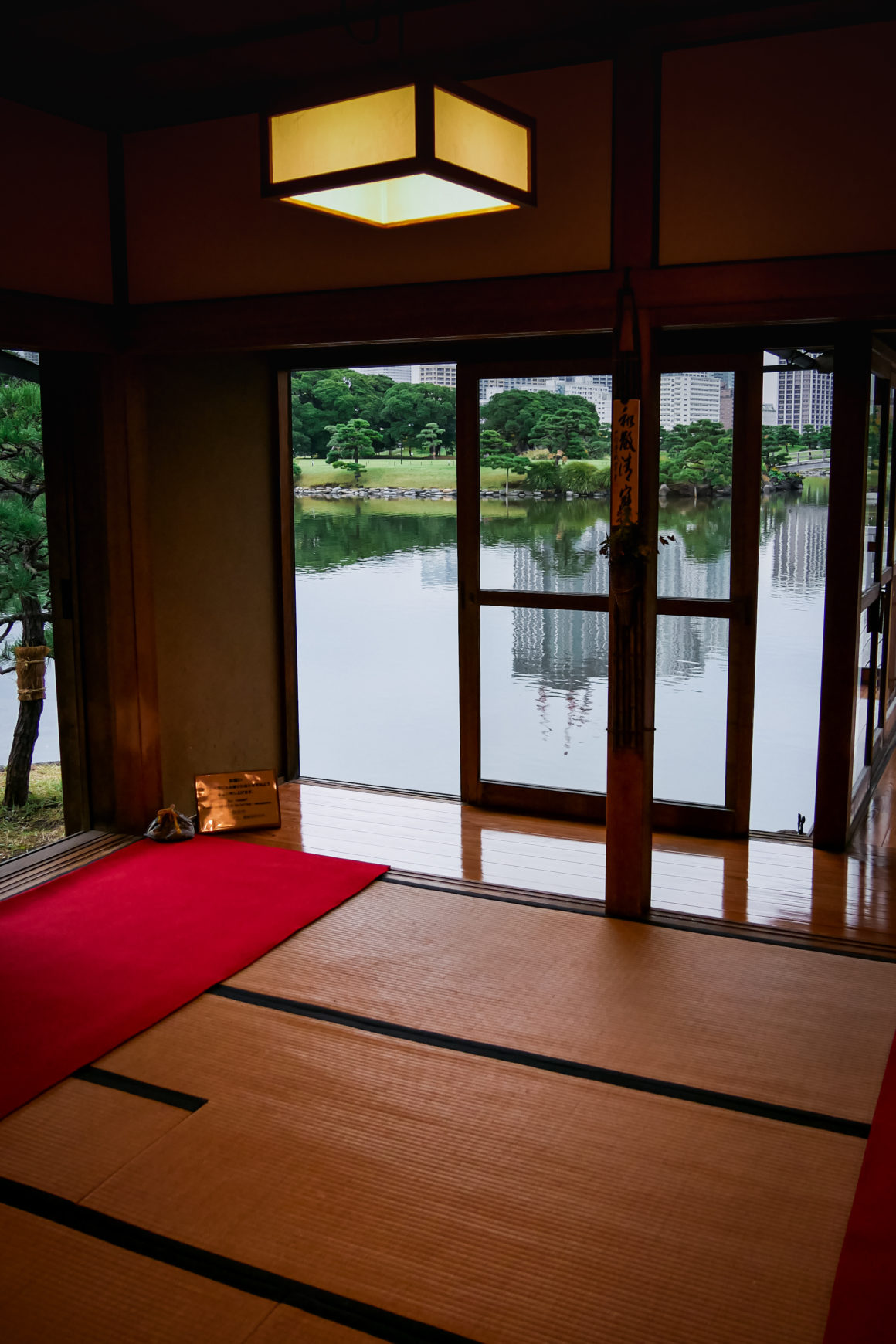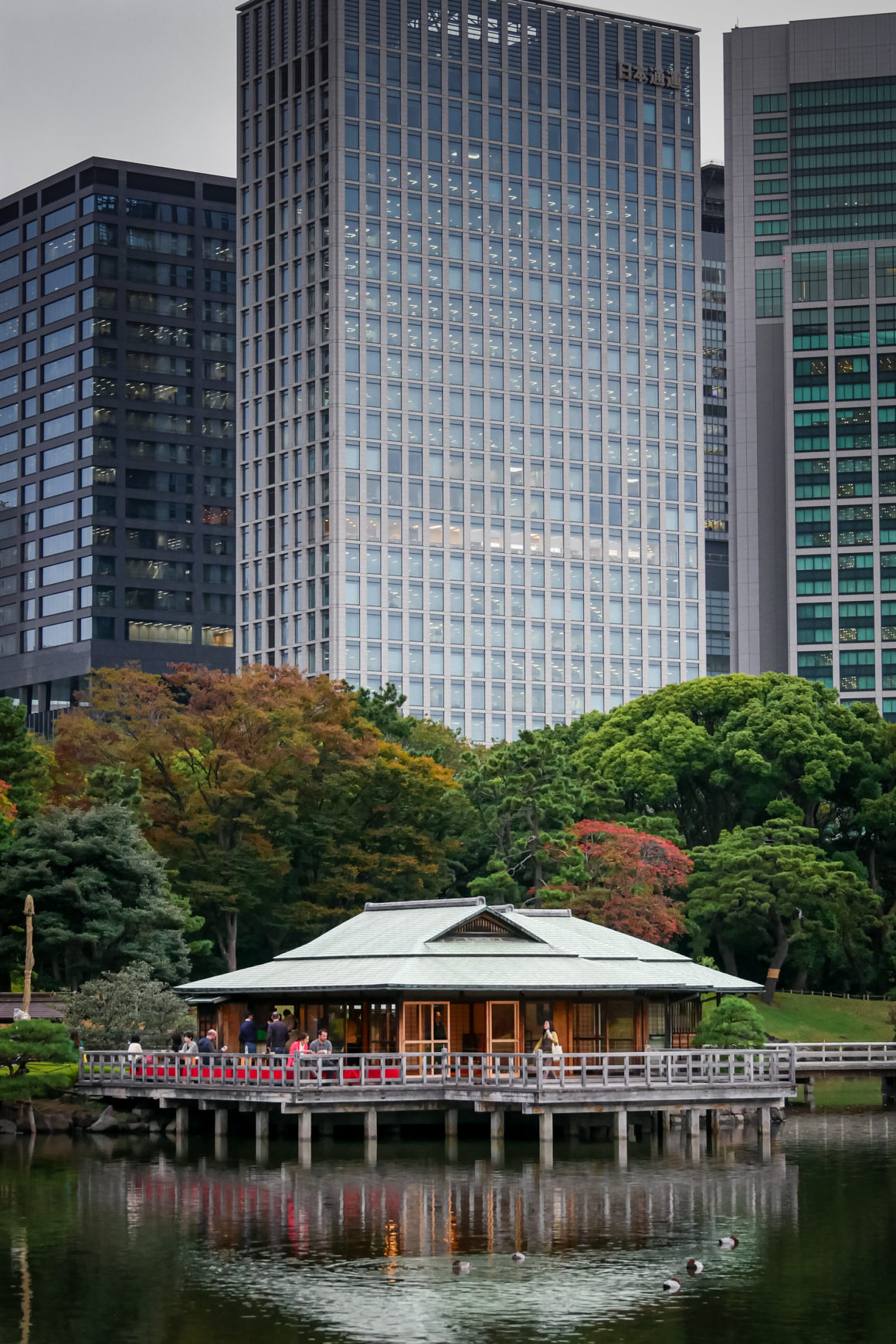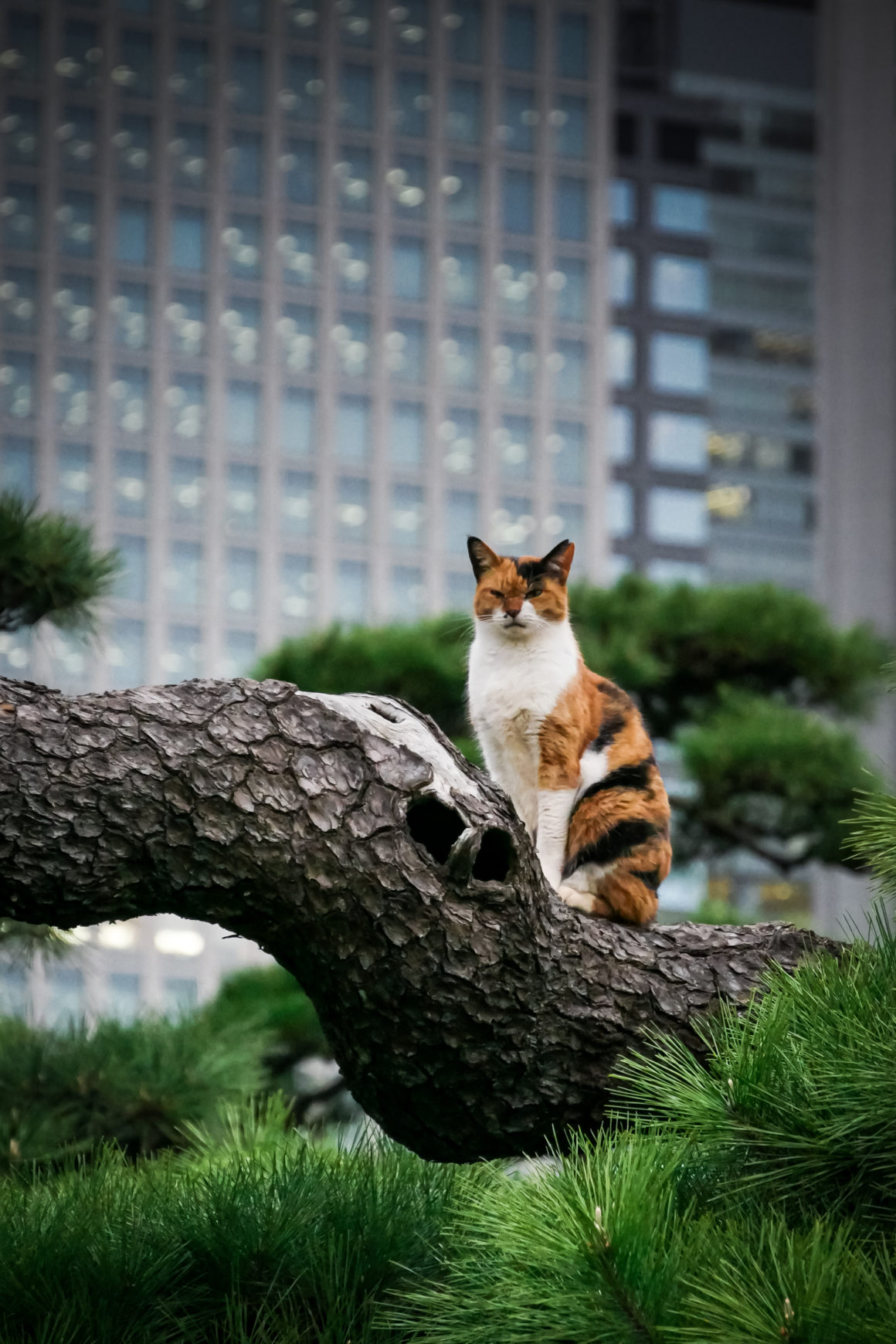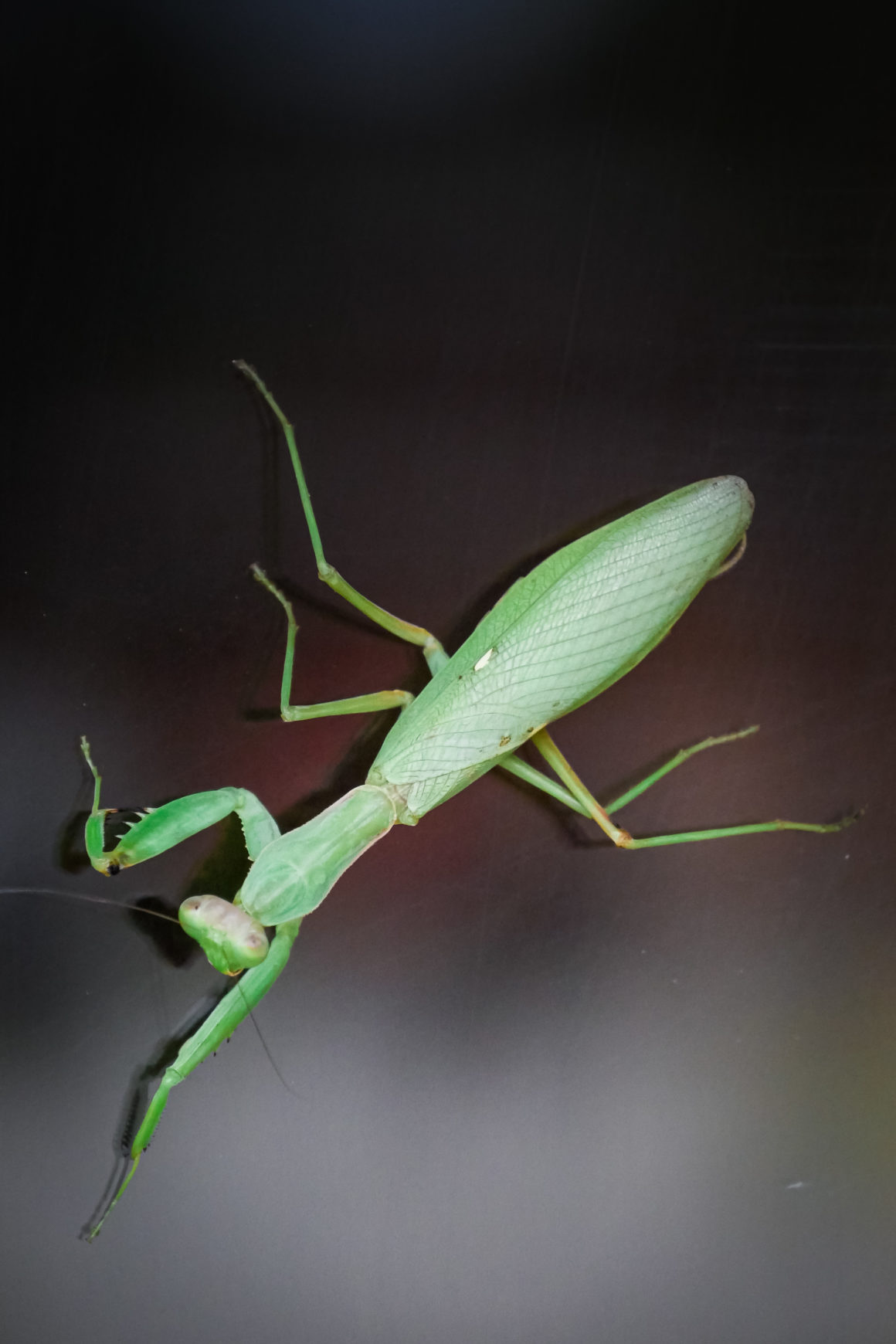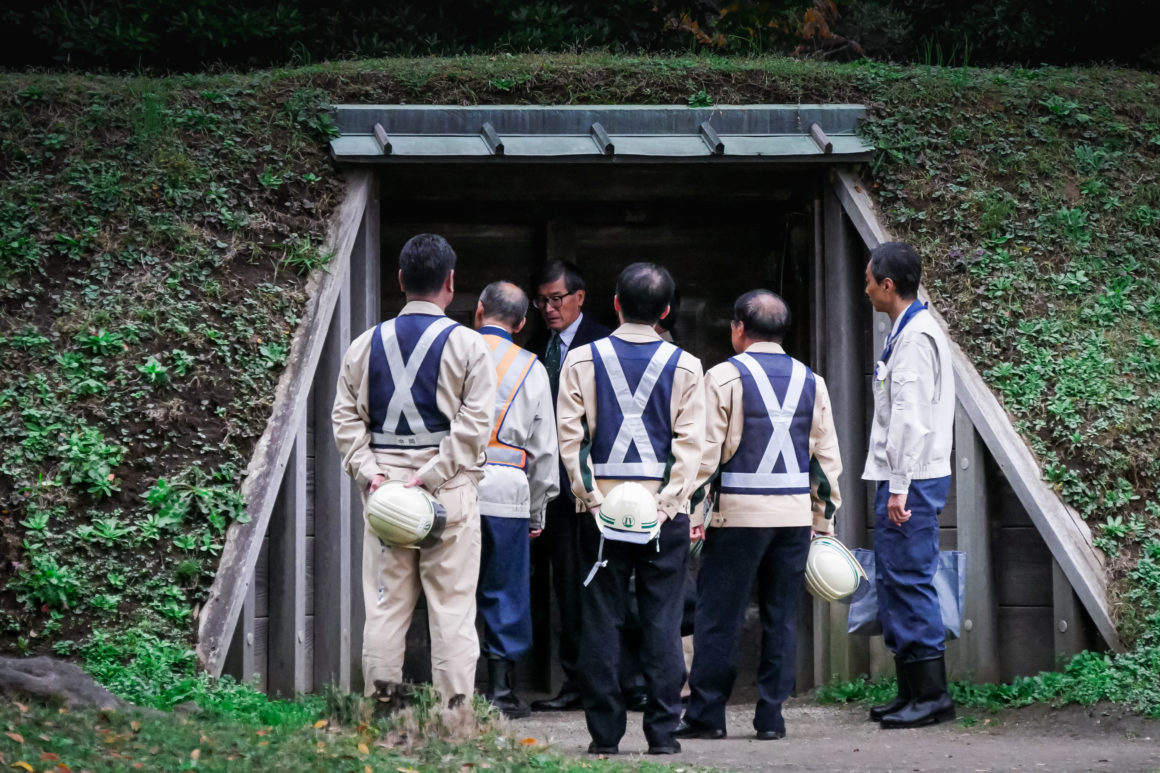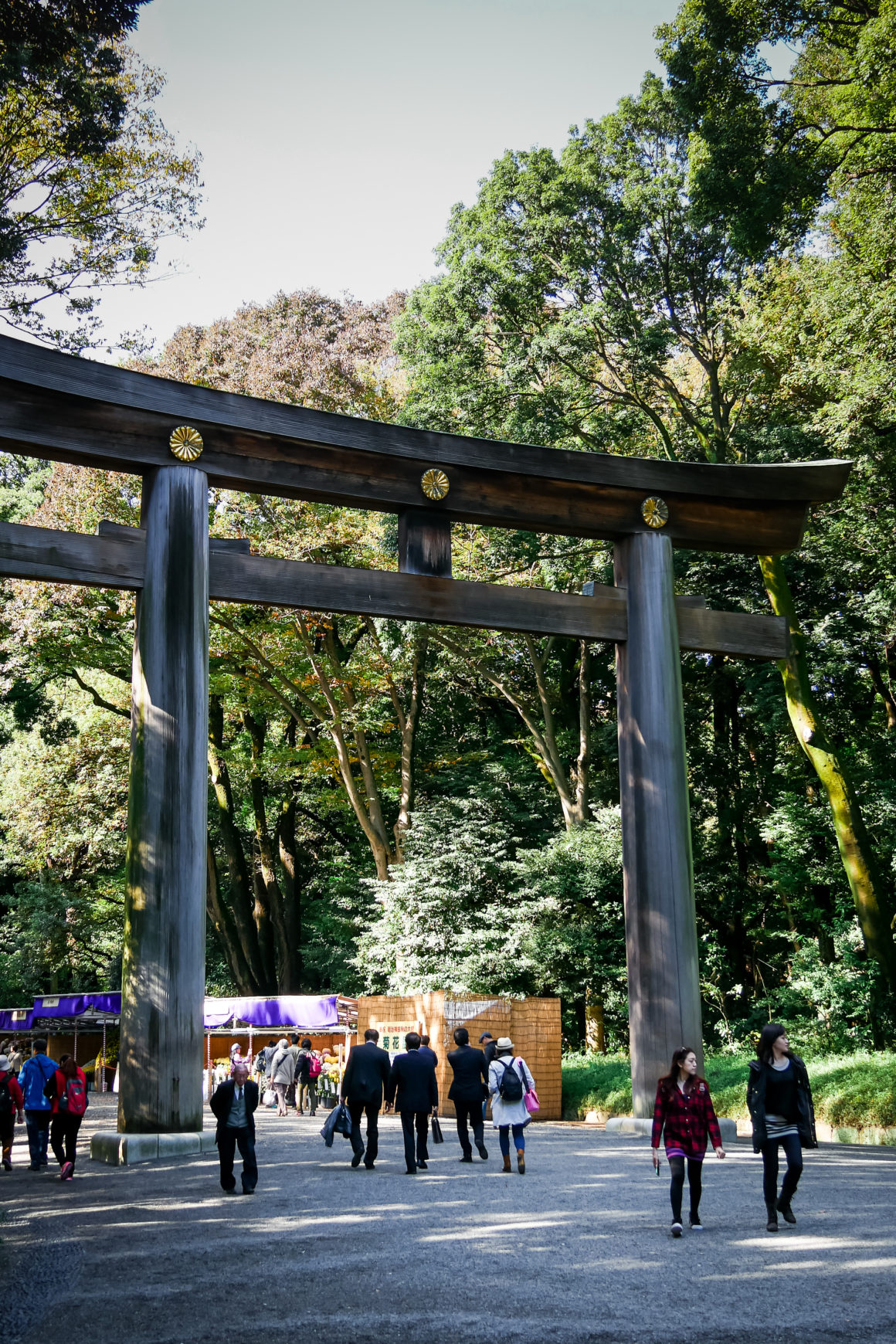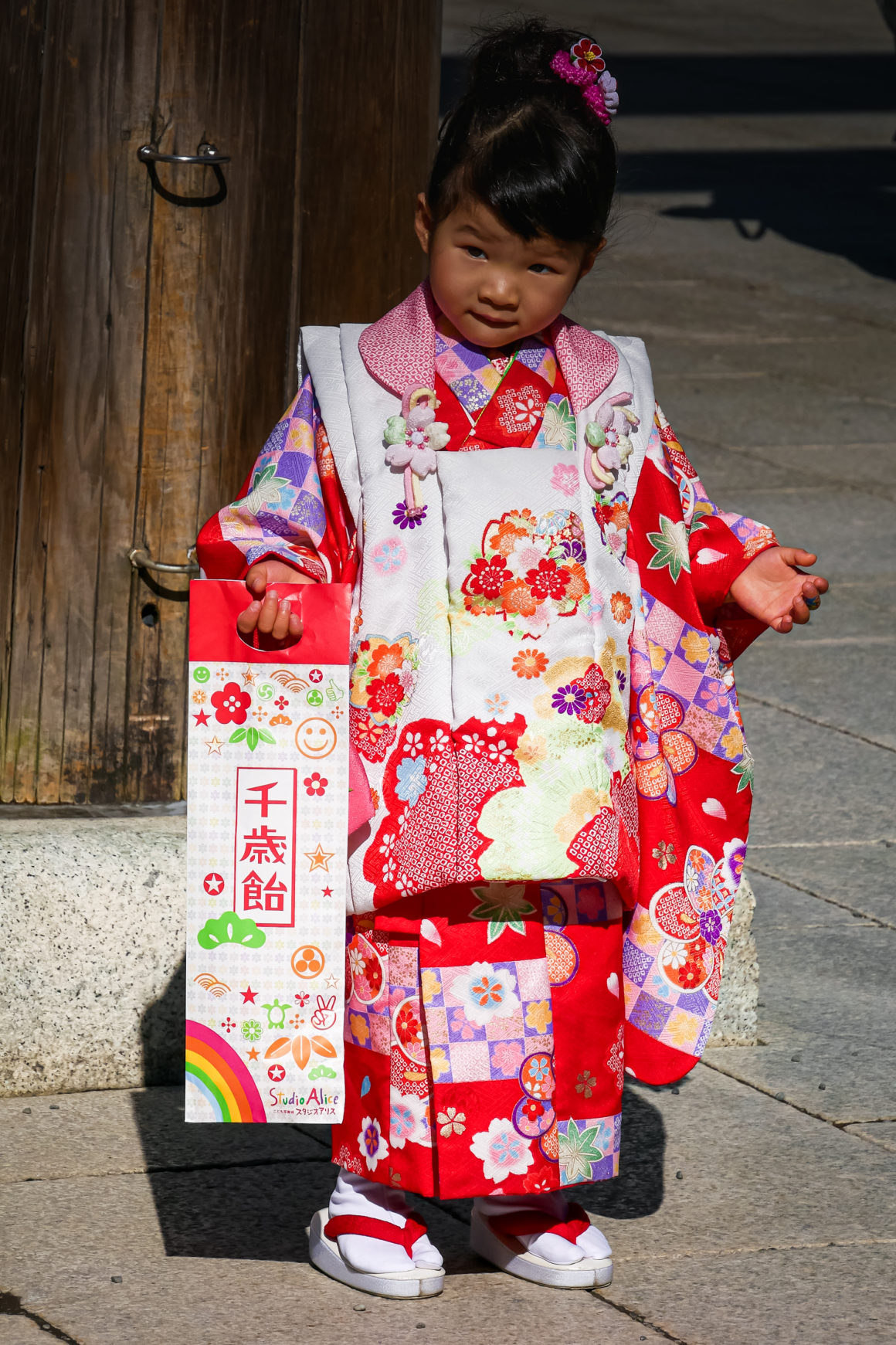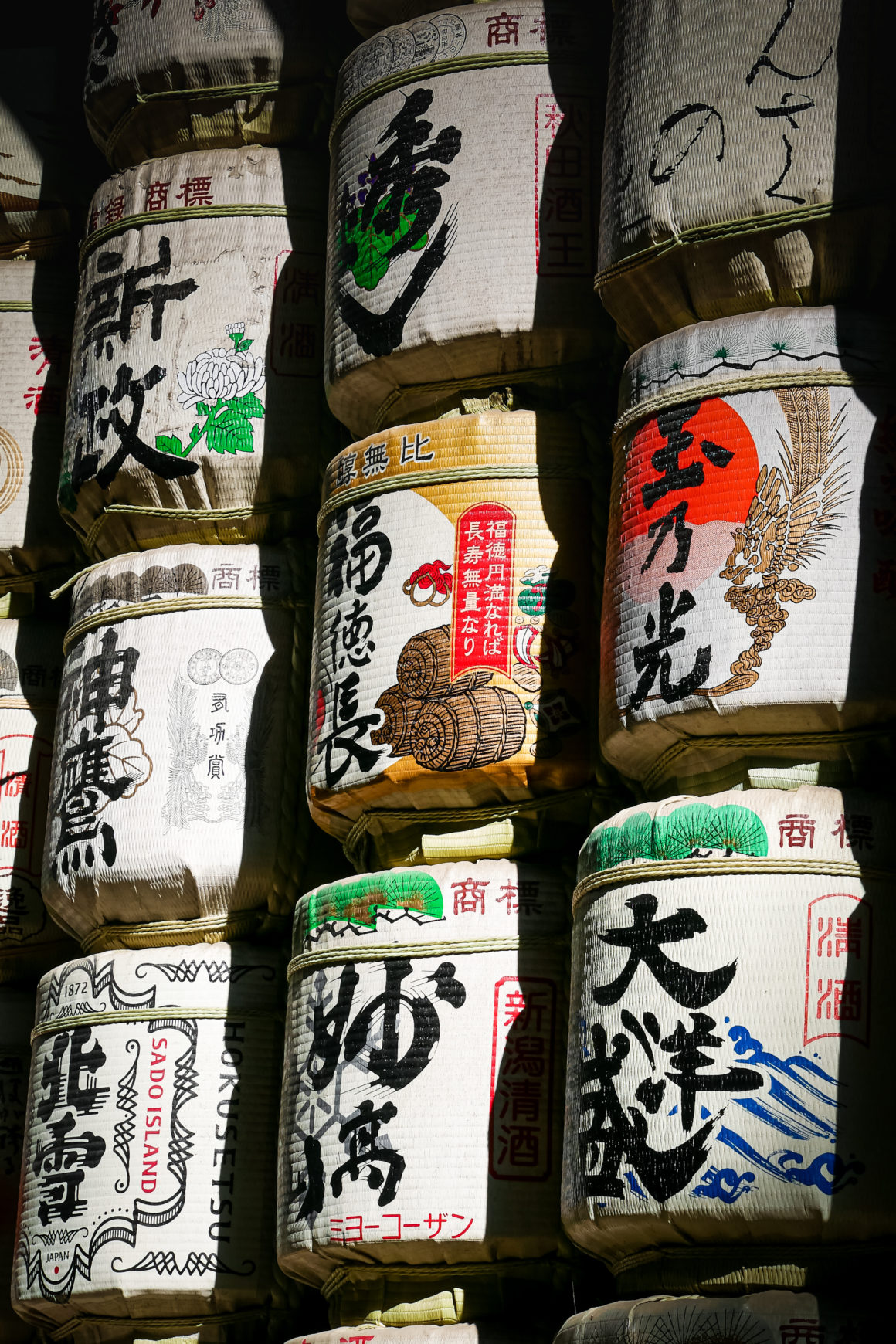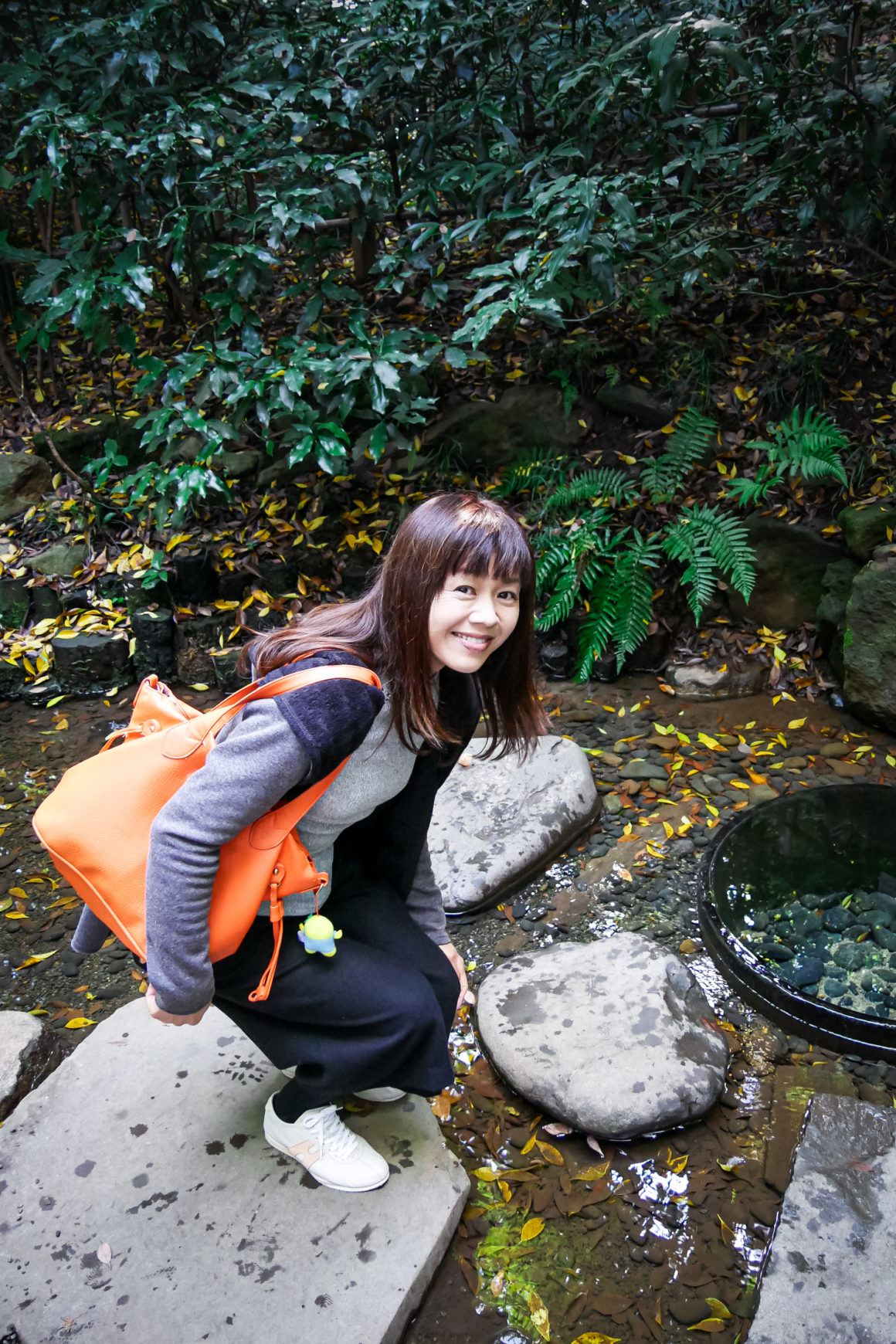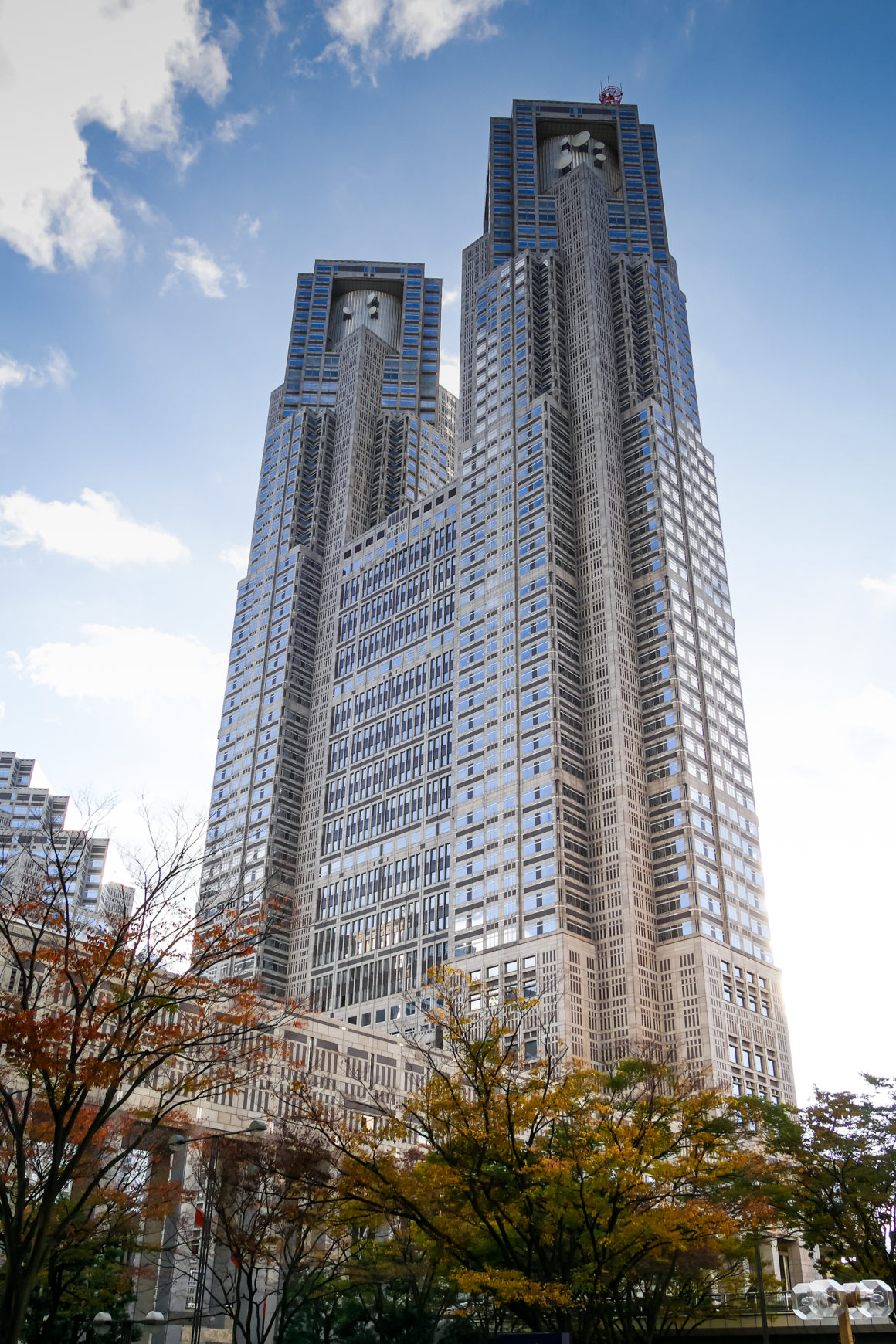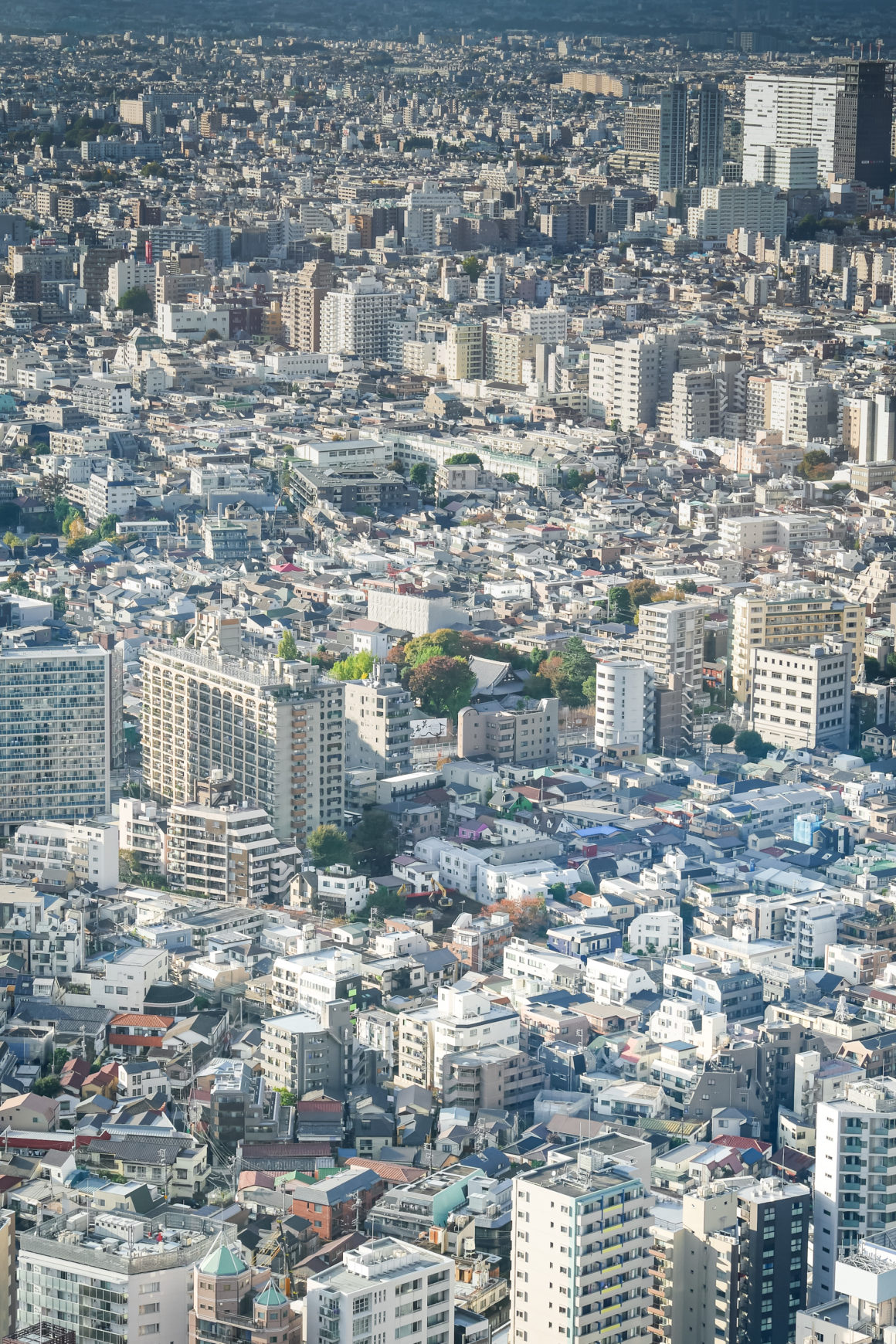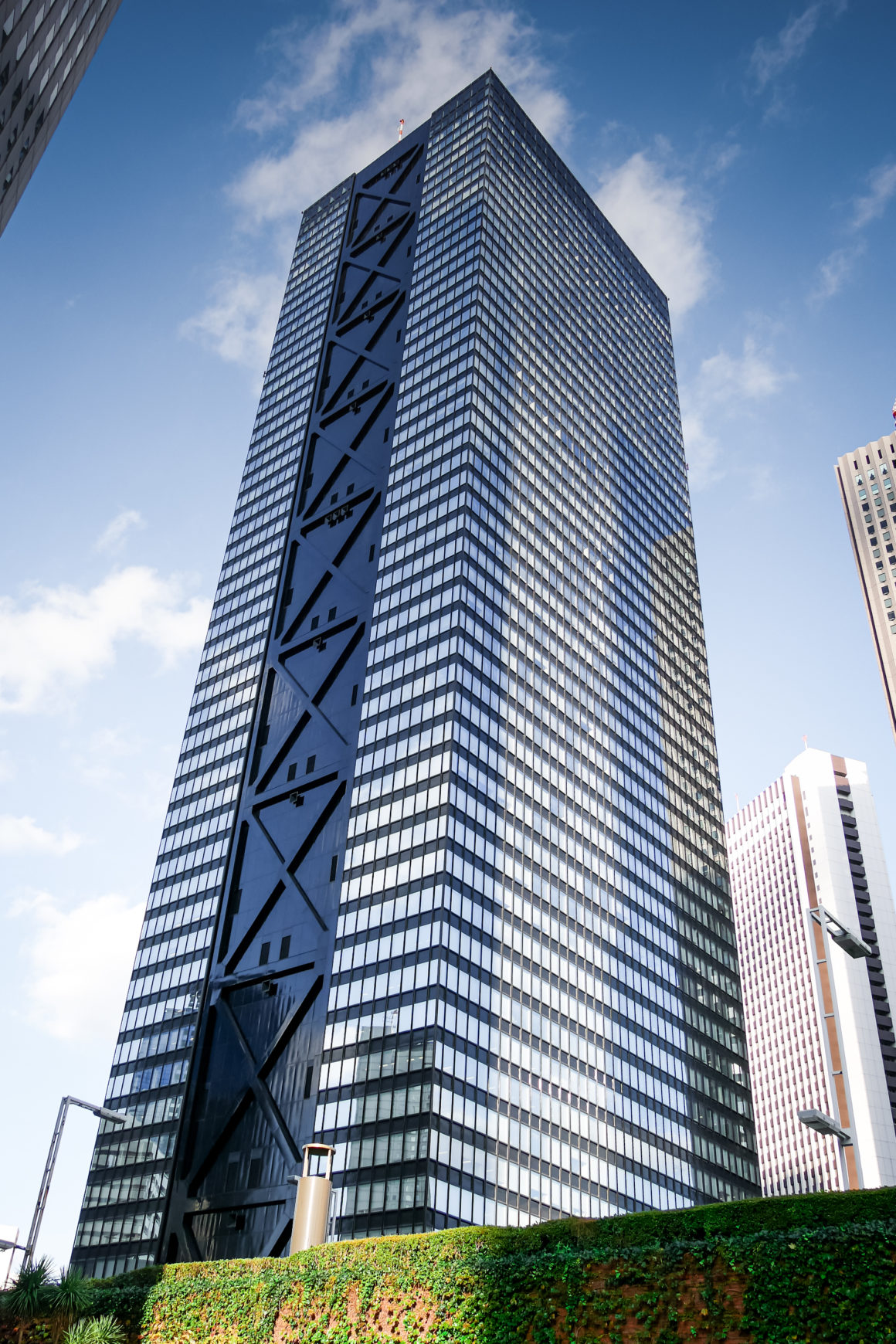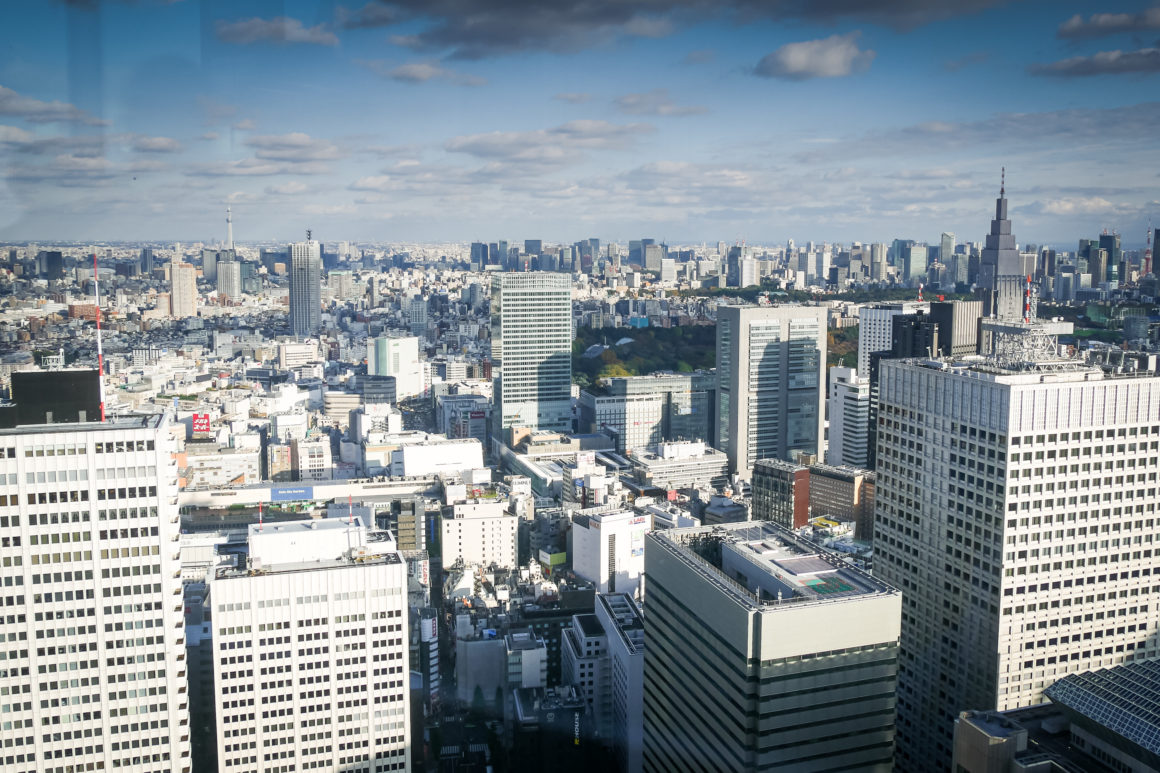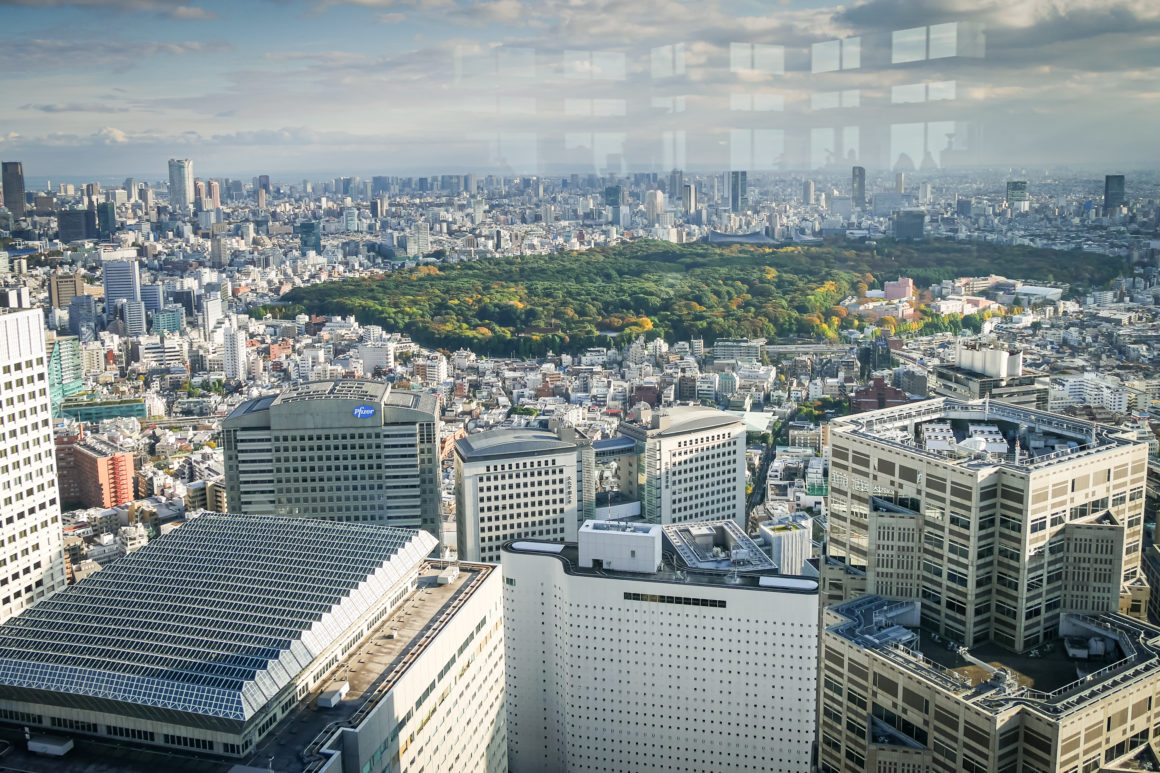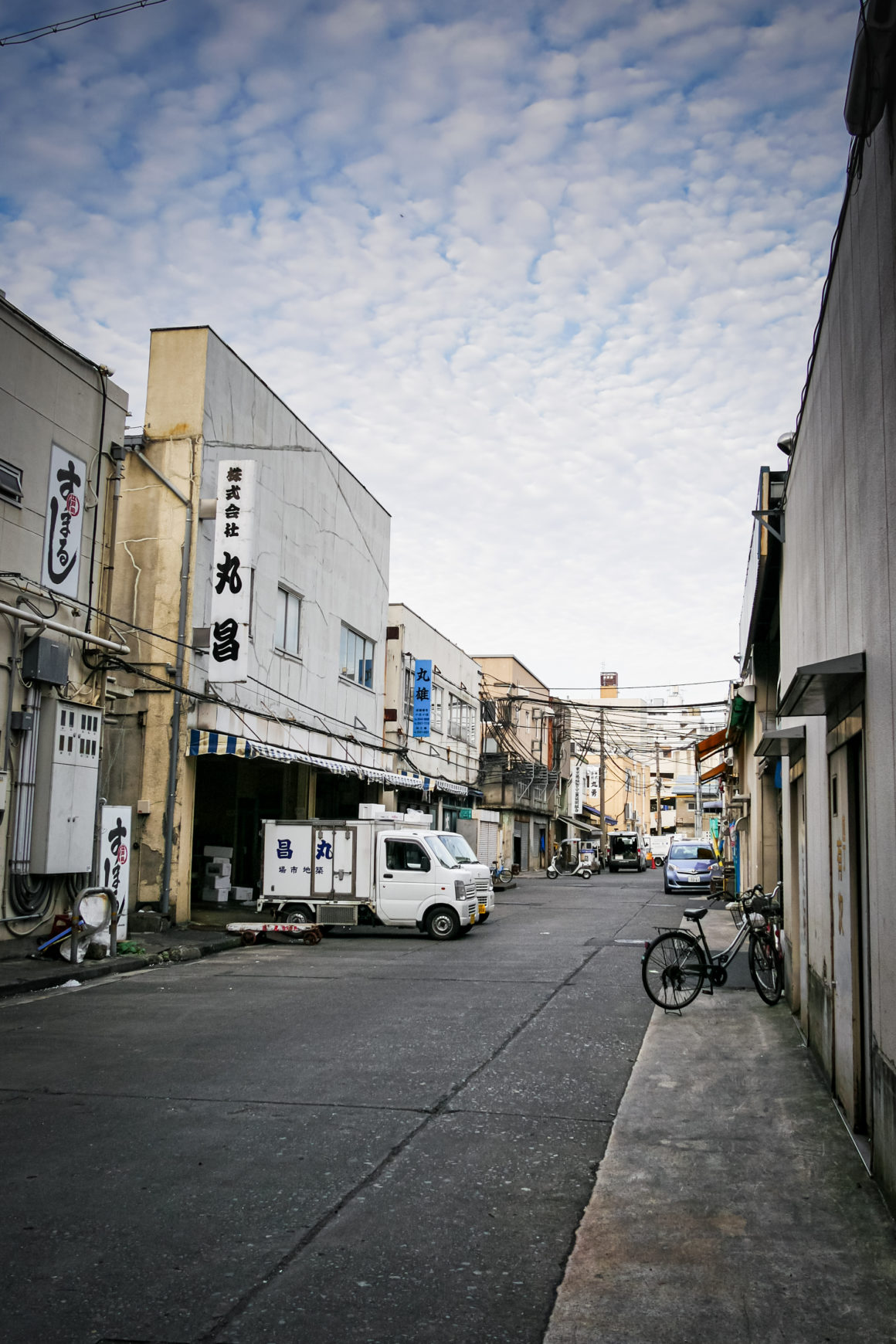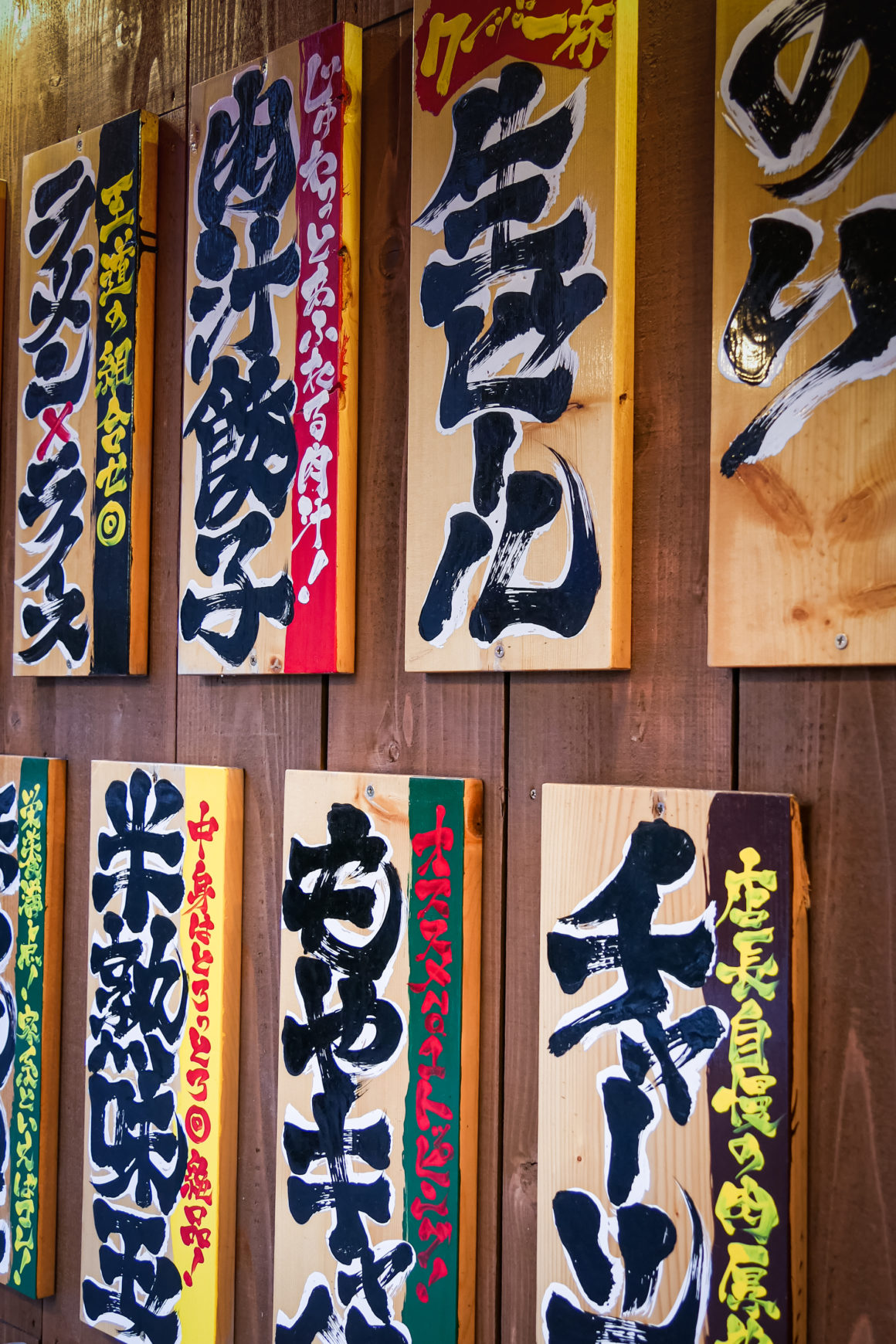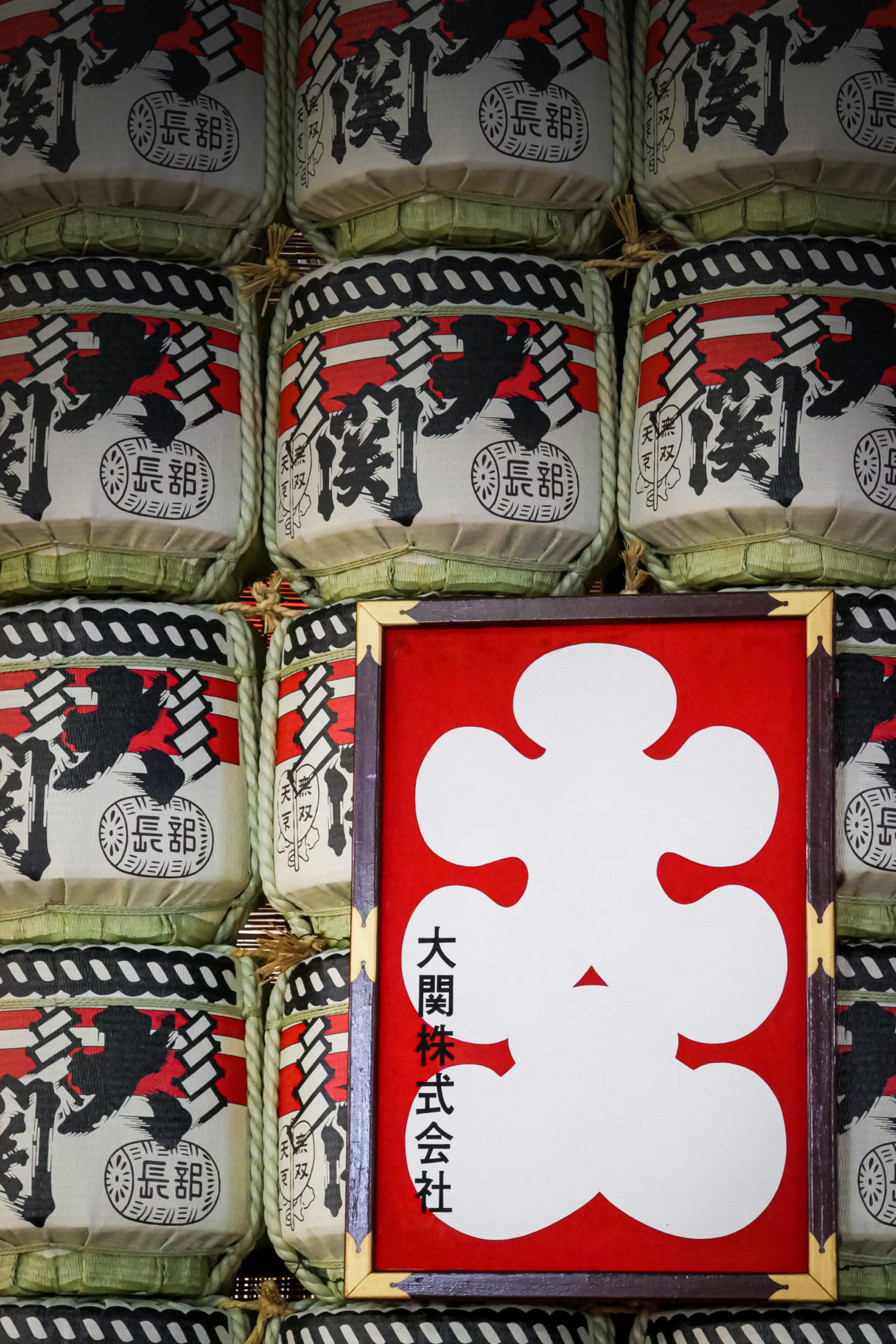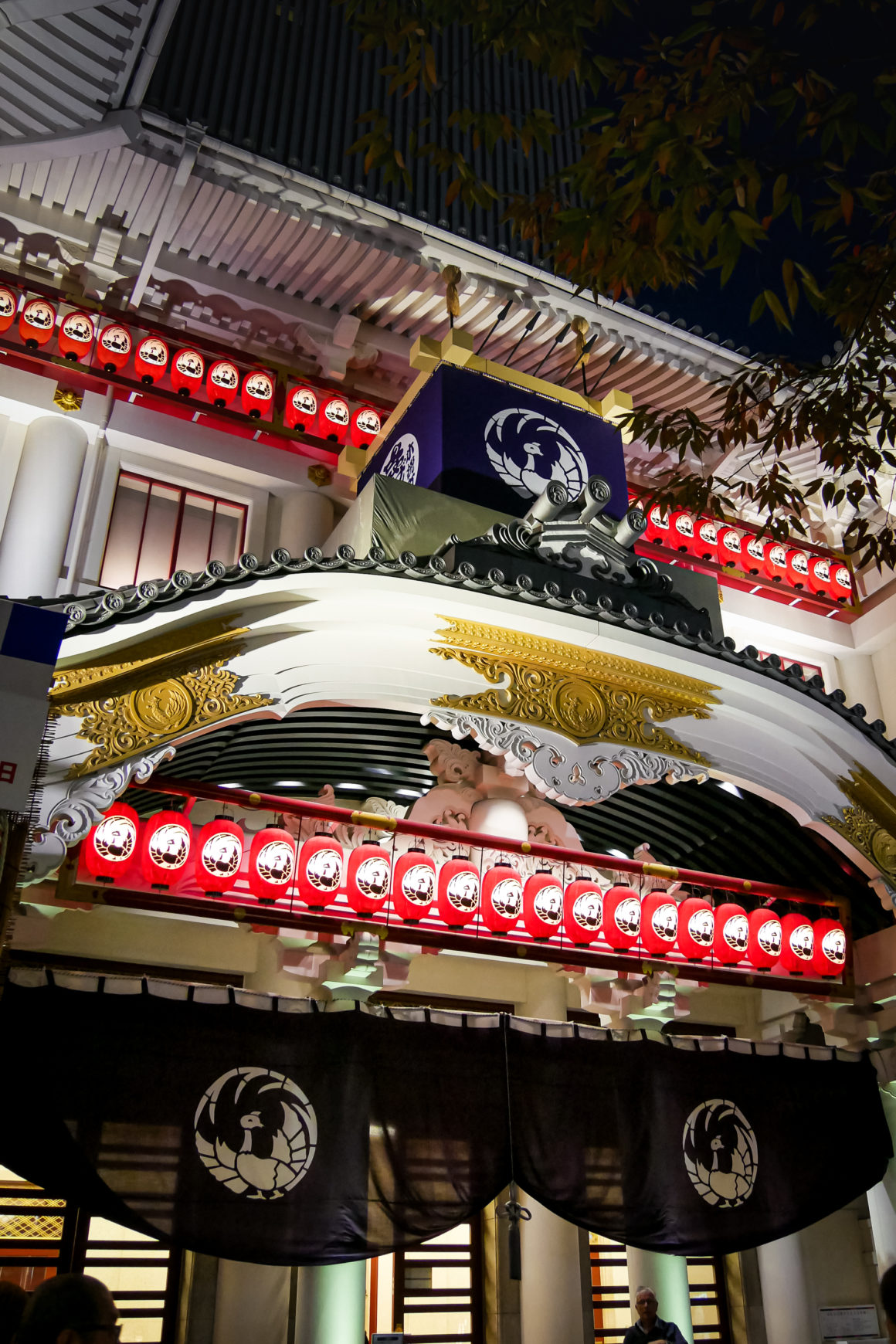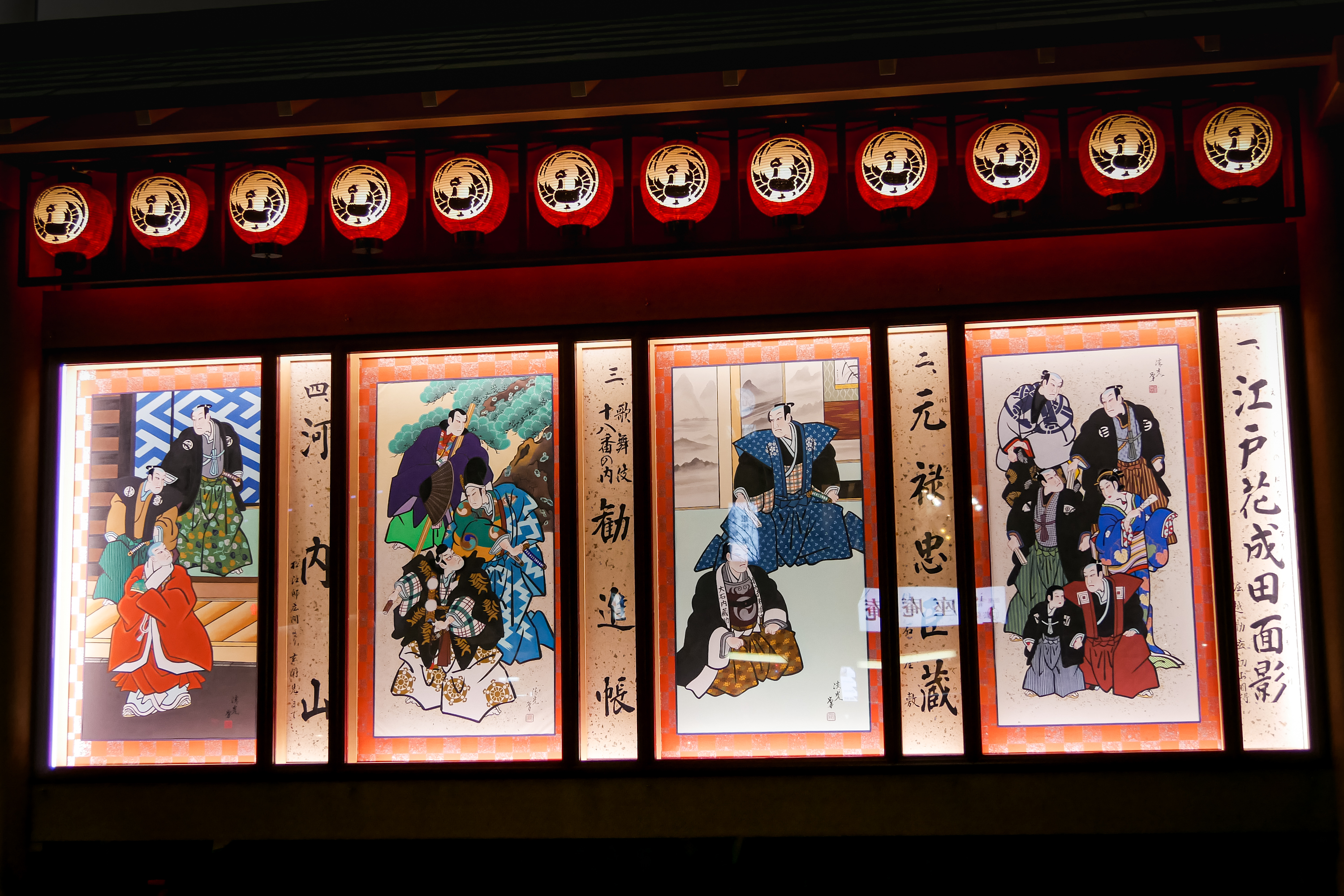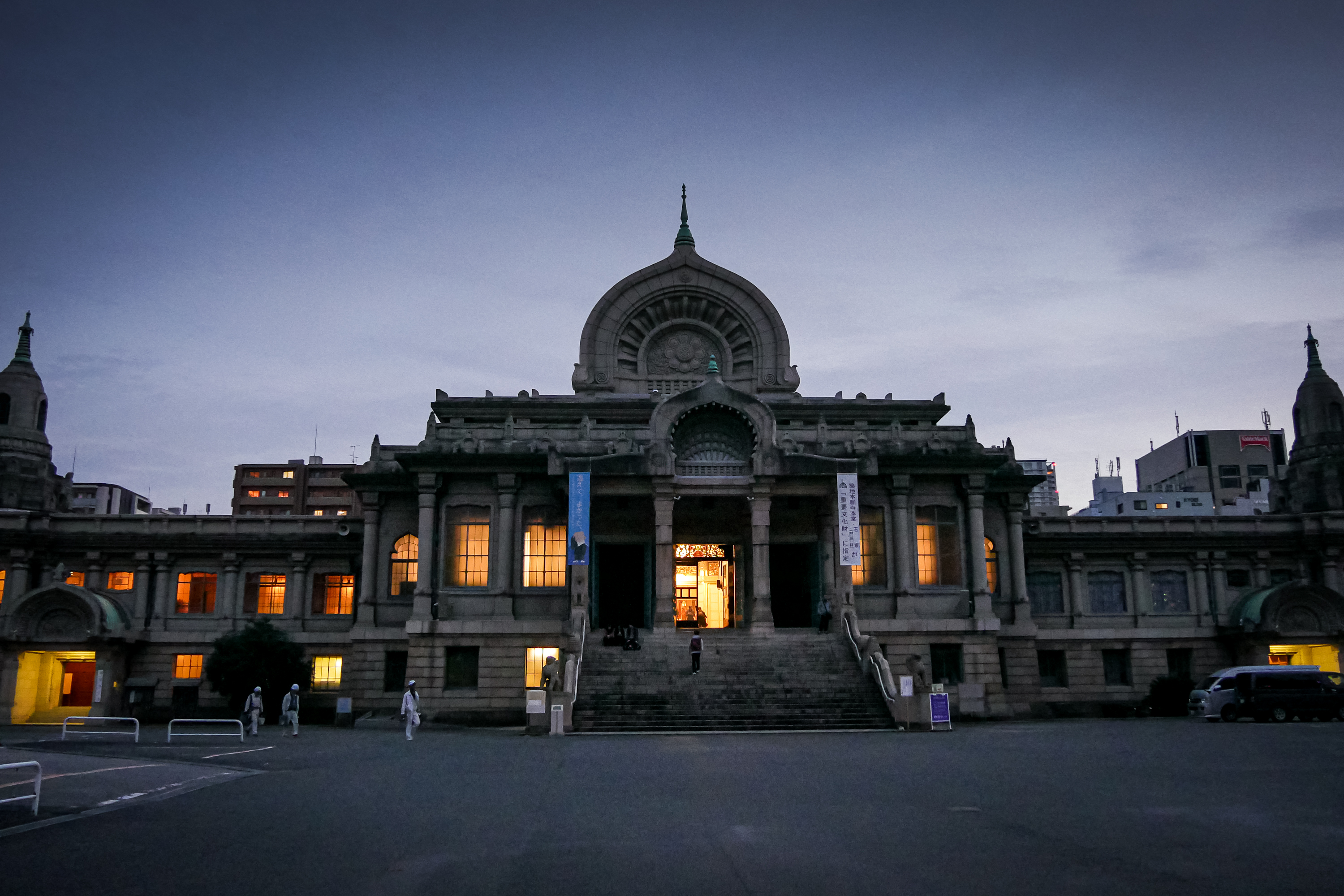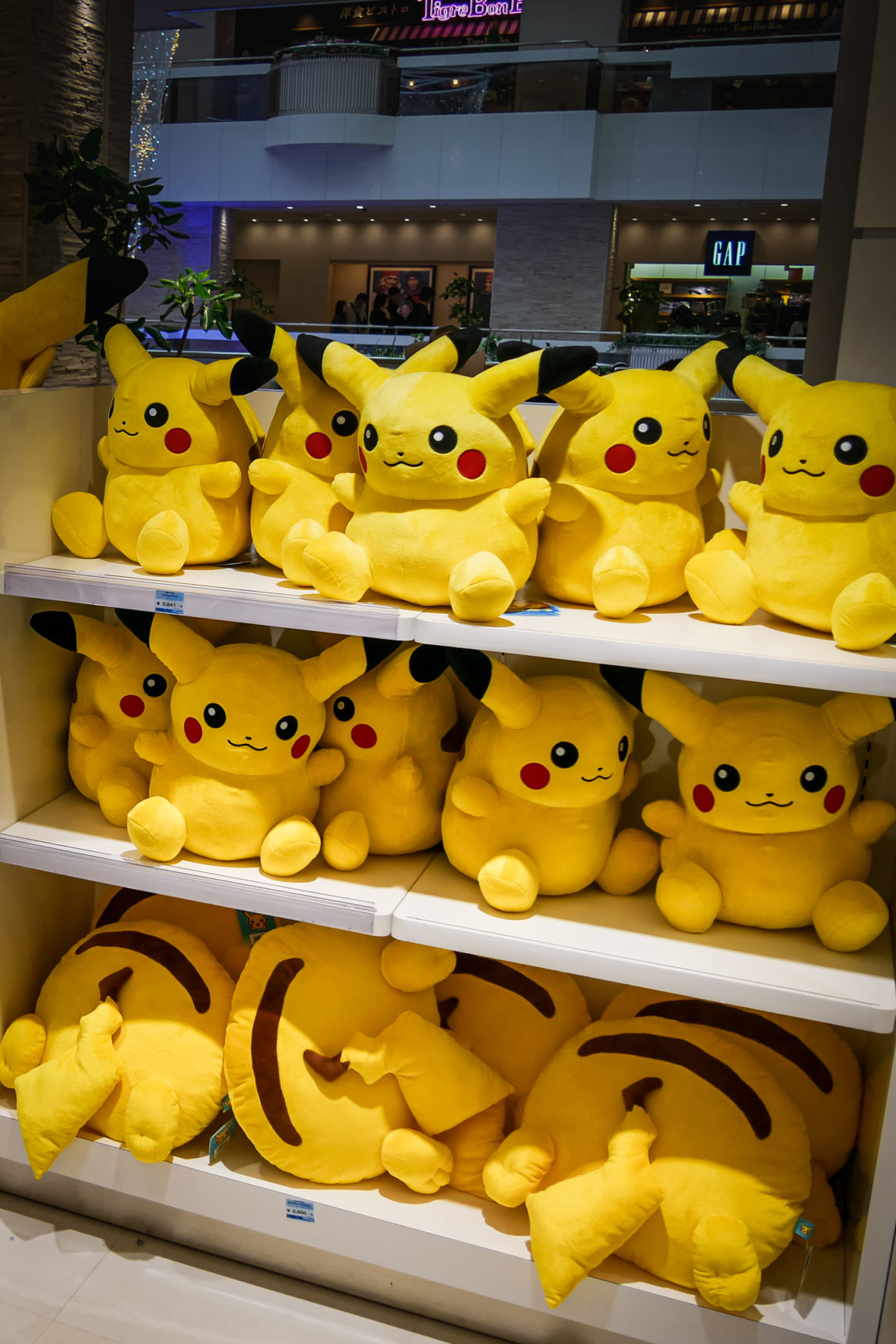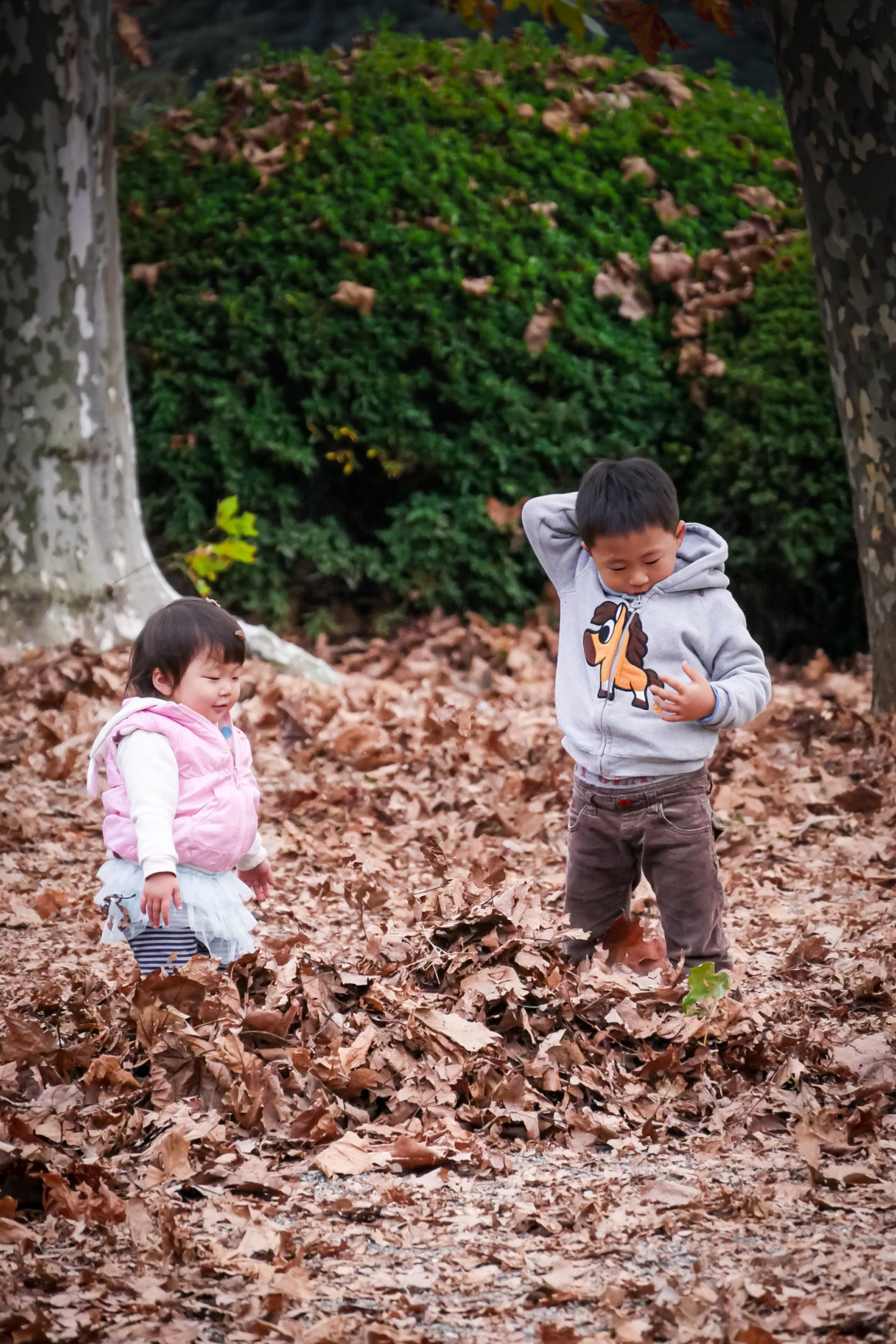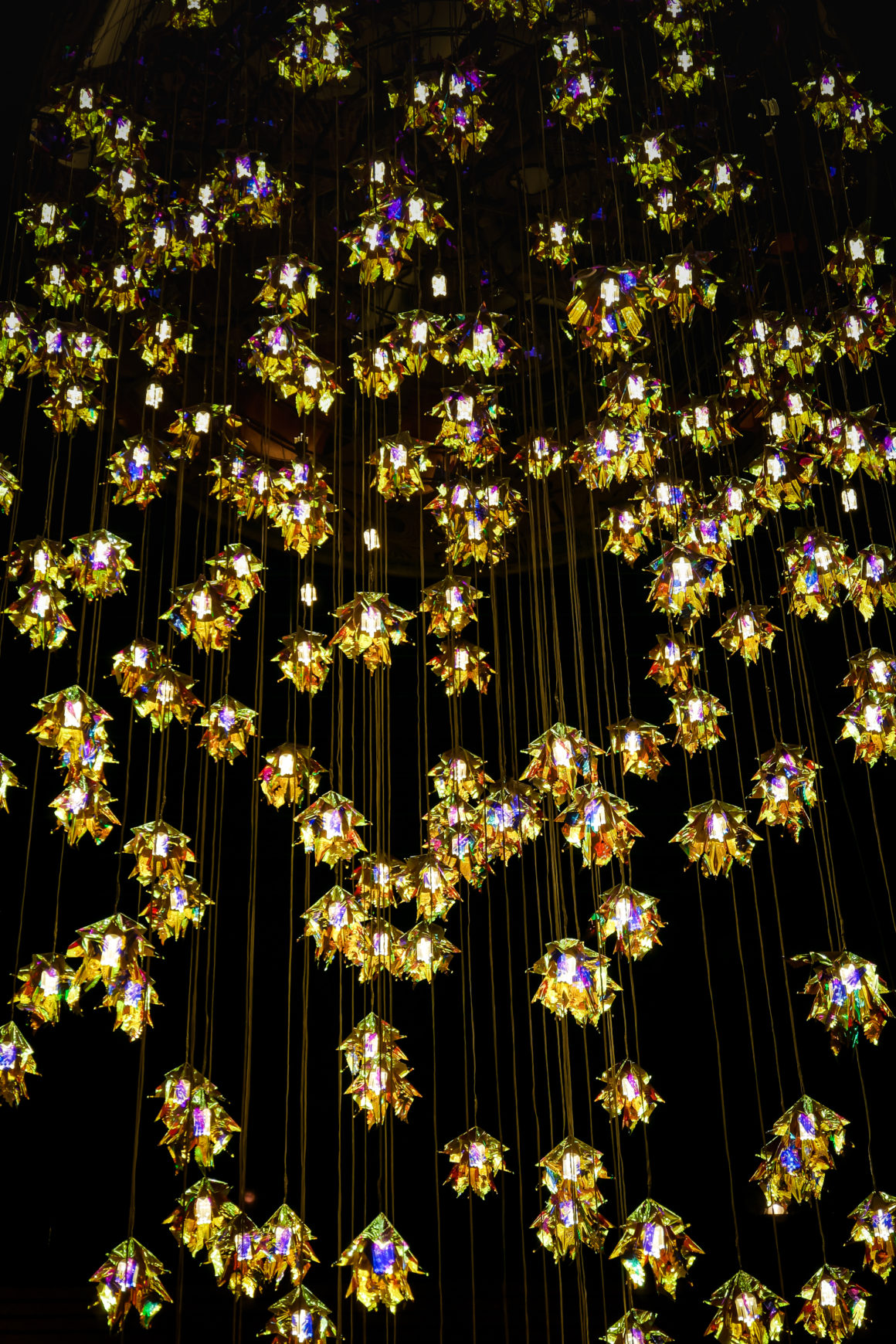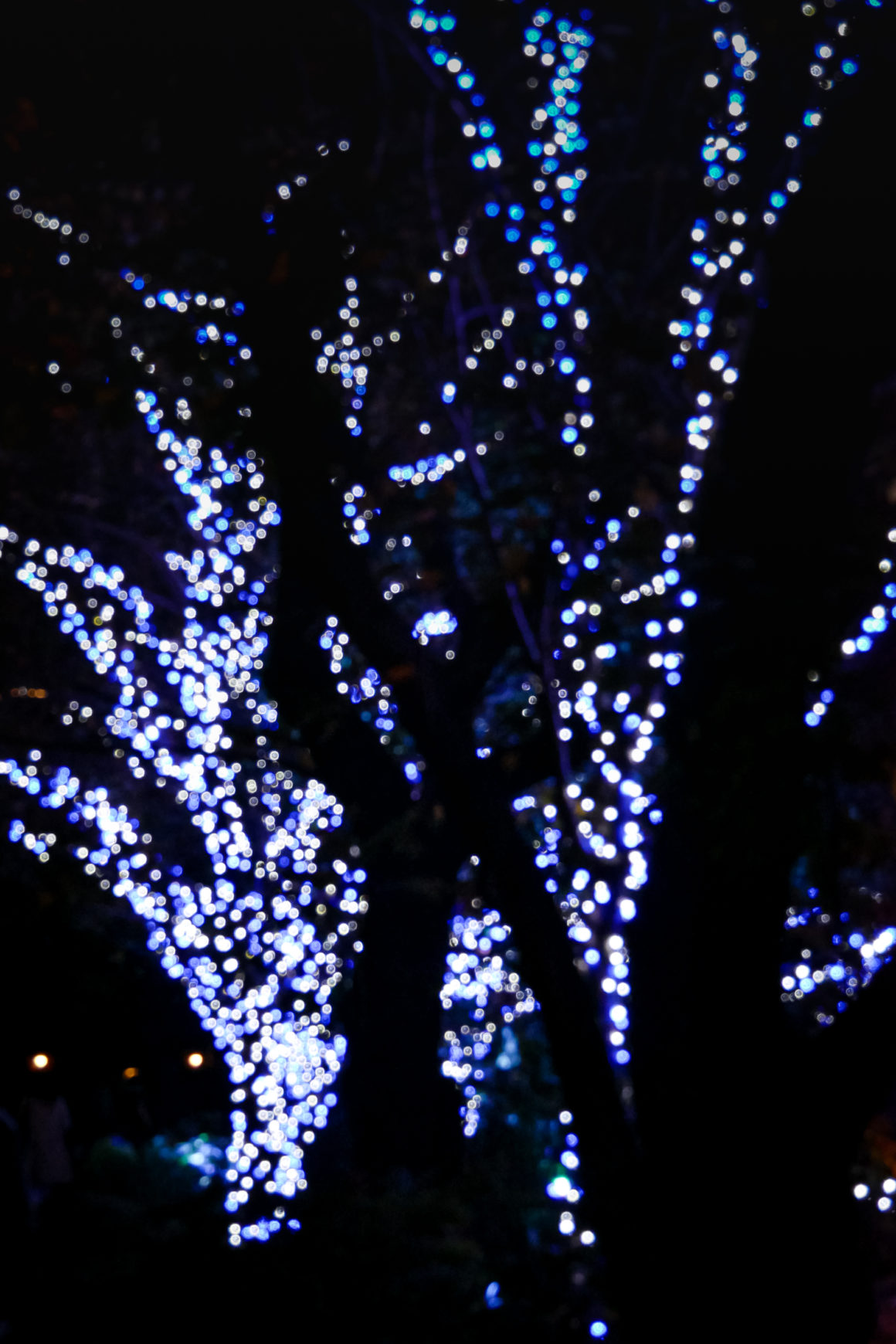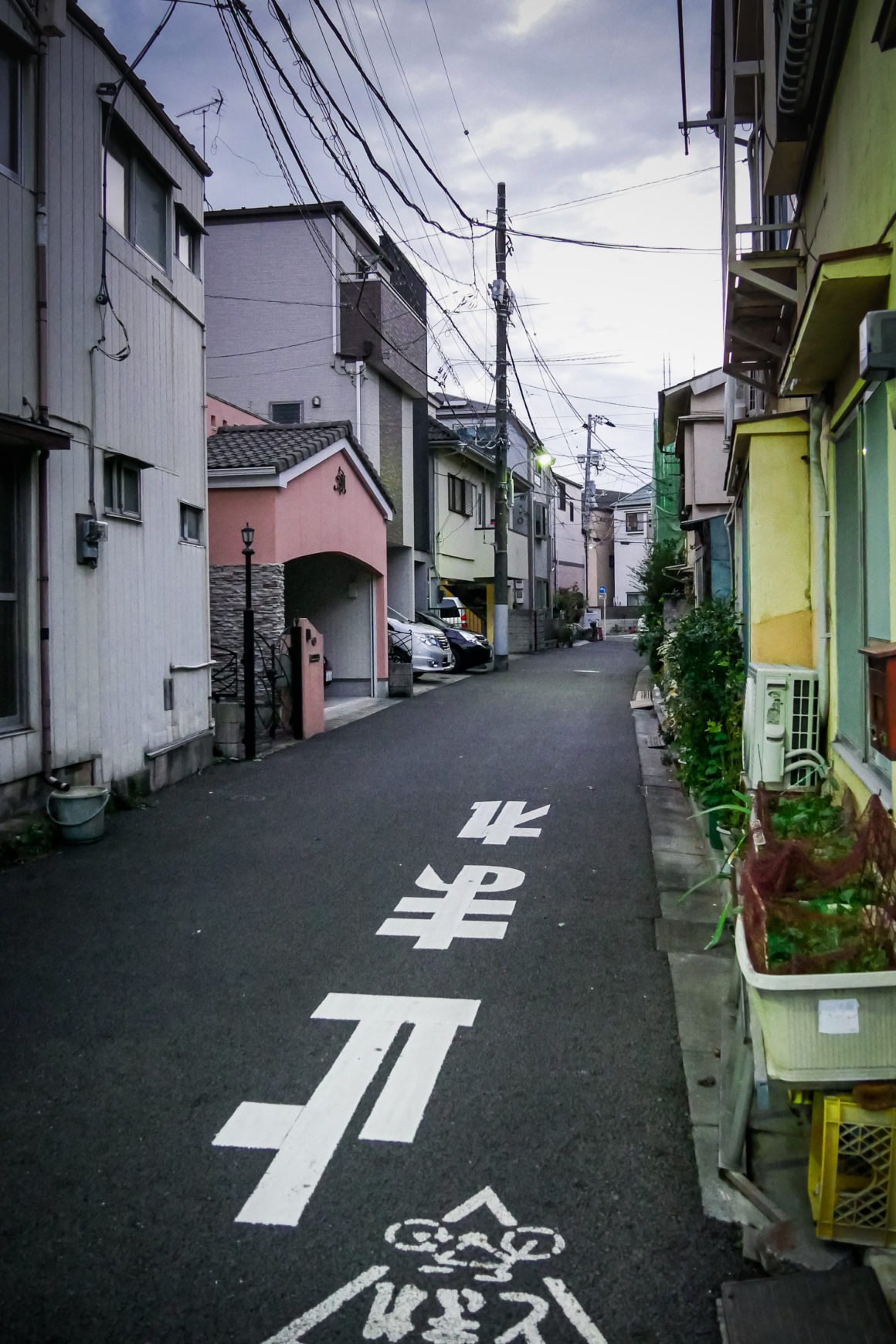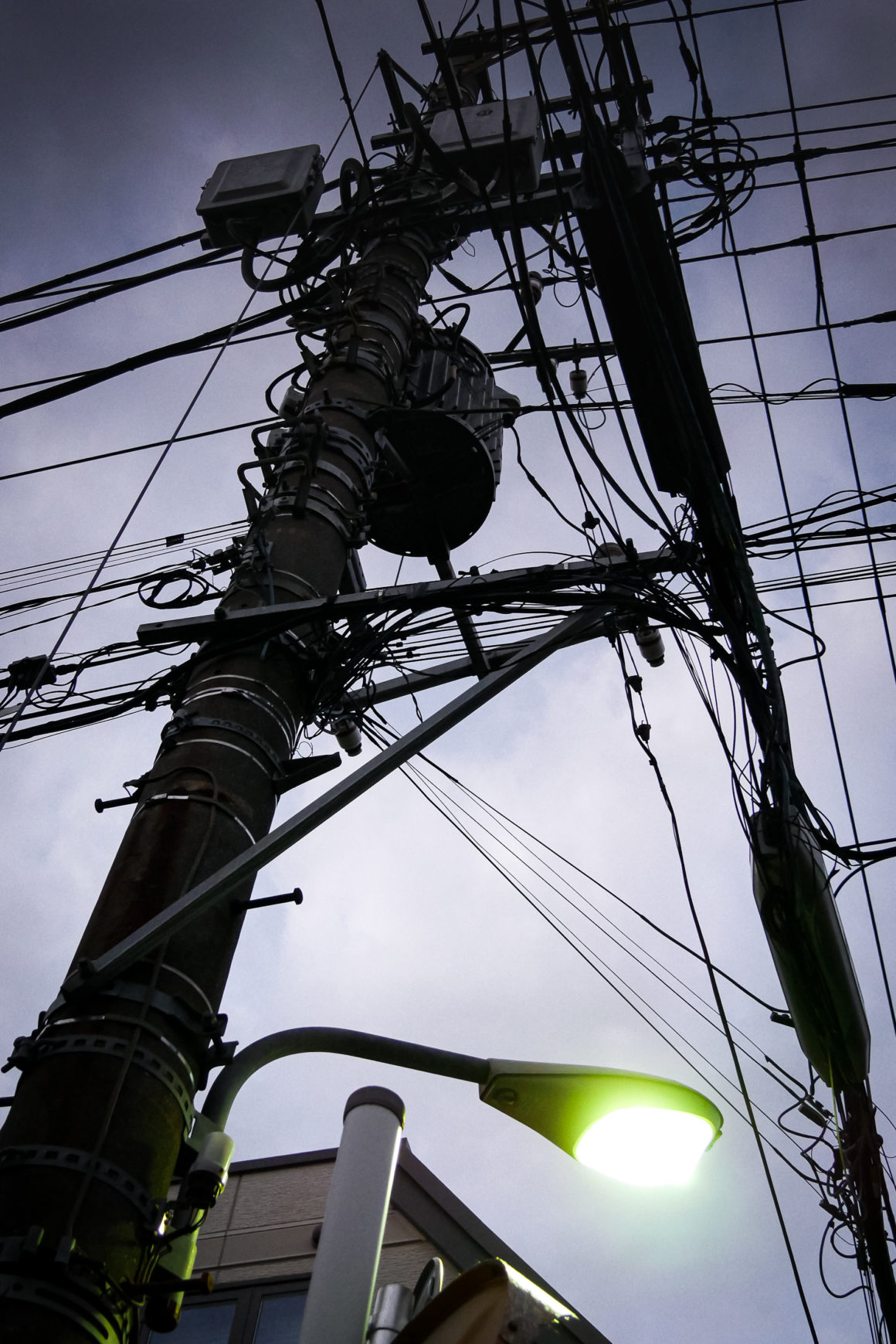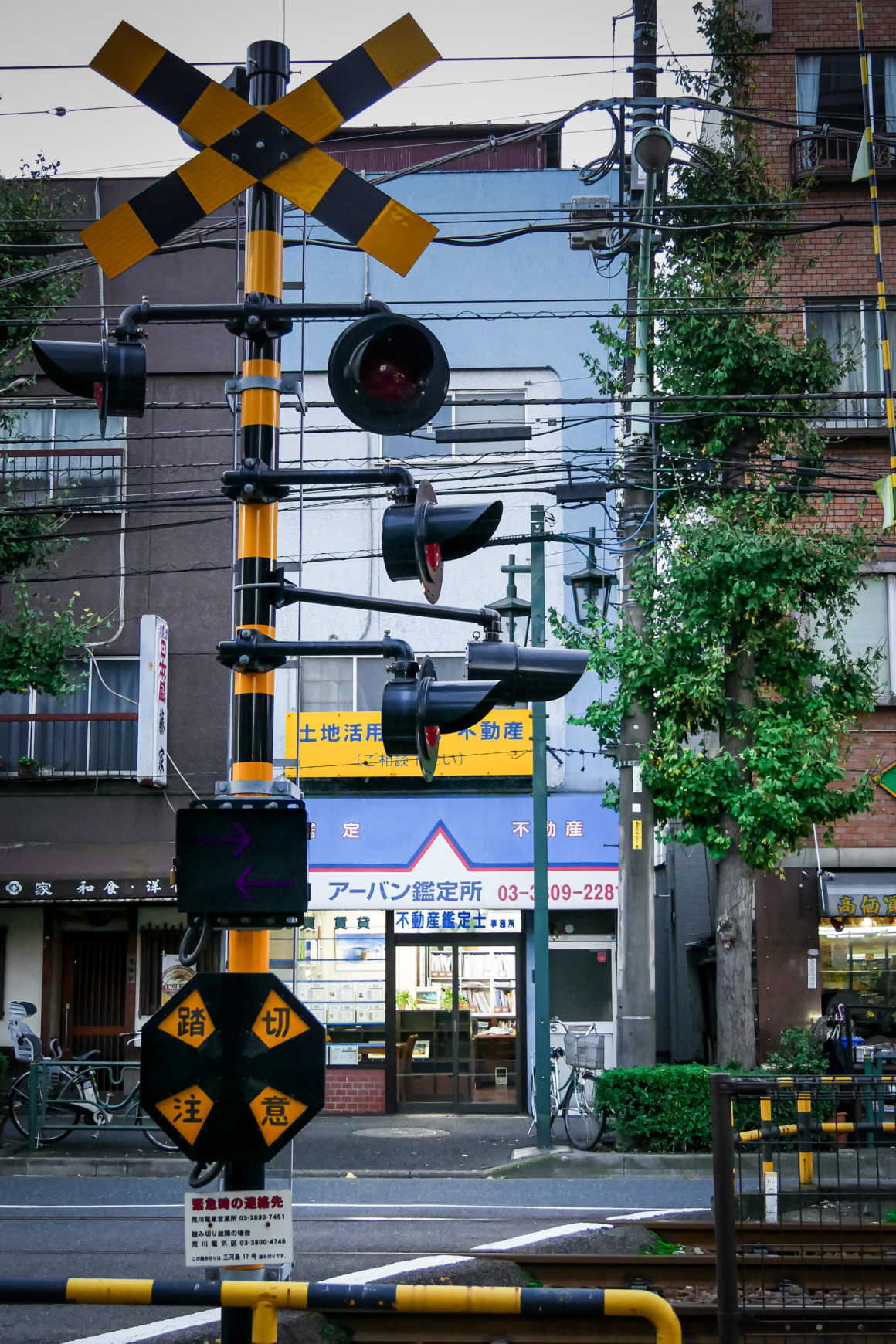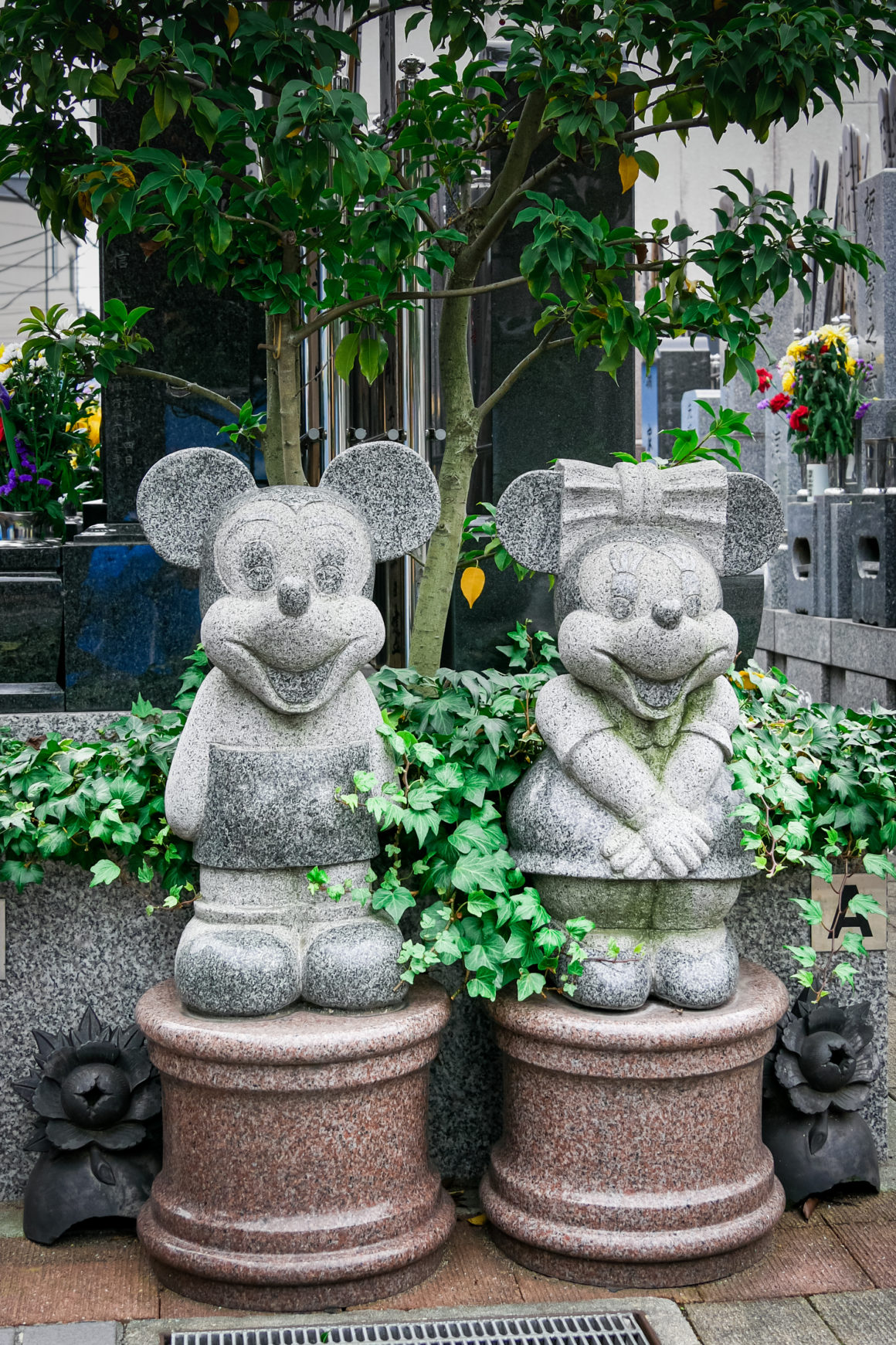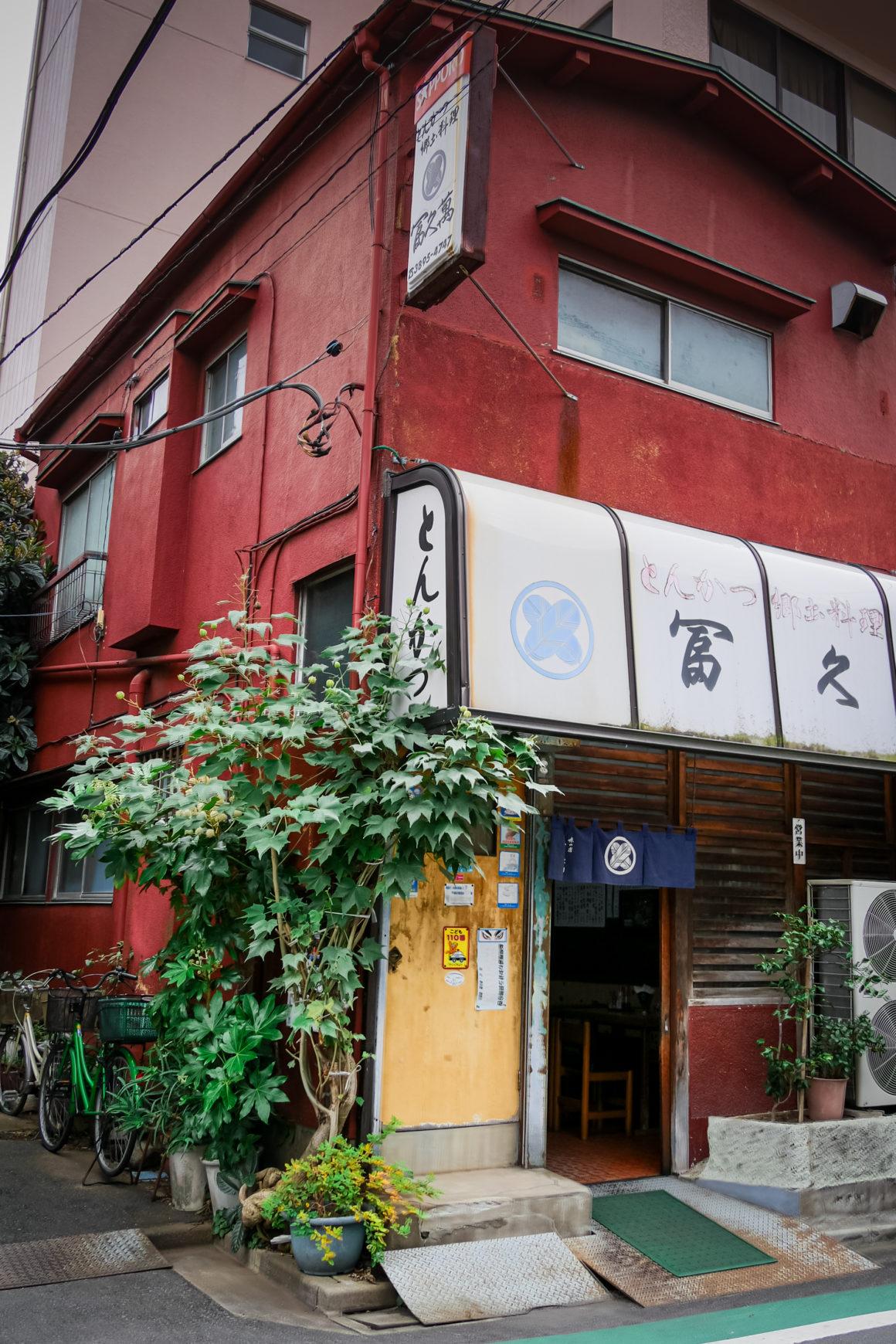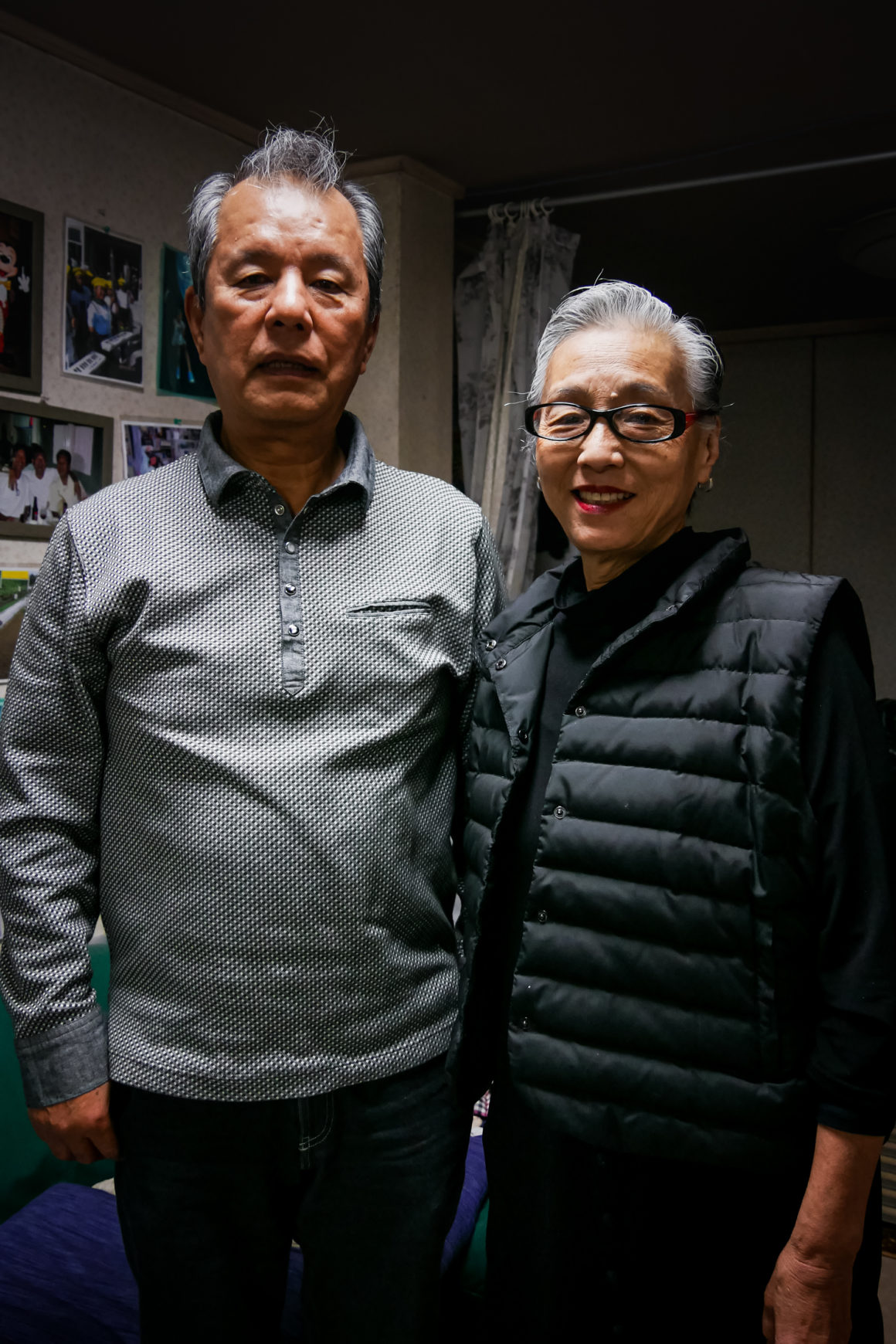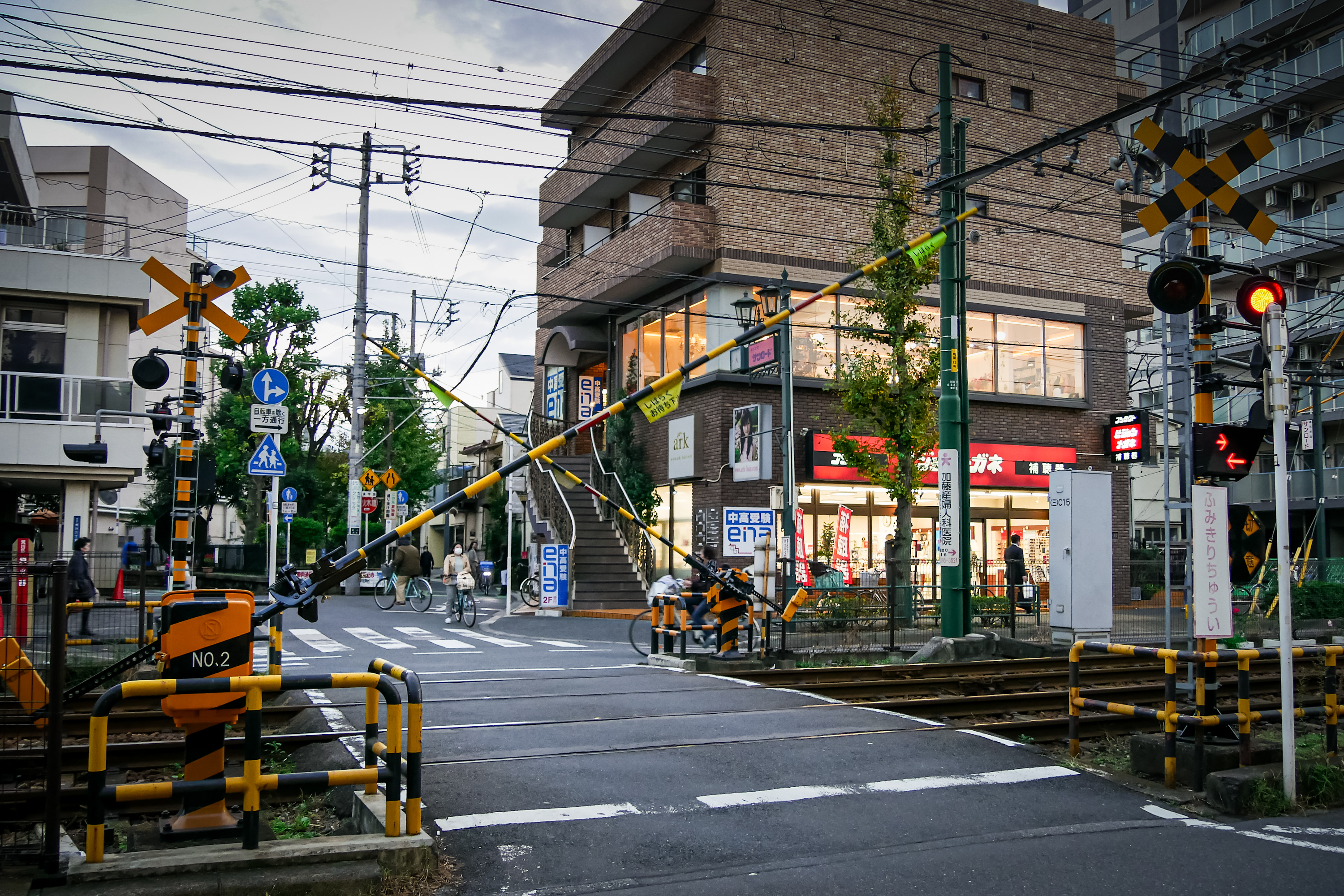DISPATCH
After a week at the hotel, I move into a Japanese family living in the Arakawa district and I continue my walks in Tokyo getting used to the Japanese culture and way of life.
Marunouchi
The Marunouchi district in the Chiyoda district is home to the Imperial Palace and its gardens, Tokyo station and is the financial and administrative center of Japan. It is home to the headquarters of the biggest Japanese banks and companies. Marunouchi means “inside the circle”, referring to the area of the Imperial Palace forming a circle and surrounded by a moat.
The Imperial Palace or Kôkyo (“Residence of the Emperor”) is located on the site of the former Edo Castle, then residence of the Tokugawa shoguns which was destroyed in fire in 1873. Today only the emperor’s domain remains (inaccessible to the public), a few fortifications and the gates and moats surrounding the enclosure. I walked along the grounds of the Imperial Palace, on foot and at night, and it takes two hours to go around. The East gardens of the Imperial Palace are very beautiful. You can see the fortifications up close. The blocks of stone used to build the enclosure are gigantic! I also saw from a distance, the home of the current emperor. The whole thing looks like a gigantic island of tranquility and greenery in the middle of the huge buildings of the administrative district. I particularly appreciated the atmosphere that emanates from the place, especially at nightfall. I felt soothed.
To walk in the business district of Marunouchi is to spend half your time with your head in the air. The buildings are huge! But I don’t find it oppressive. There are many shops and I went to the Tokyo International Forum, a huge cultural complex. In the middle of it all, there is Tokyo station, a red brick building of renaissance style built in 1914. The architecture is very beautiful but the space in front of the station was occupied by works so I did not took pictures.
Akihabara
Akihabara is the temple of electronics, animation and manga shops. The regulars call it Akiba or Akihabara Electric Town (“Akihabara denki-gai”). The origins of this district date back to 1870 when, following a terrible fire that ravaged part of Tokyo, the authorities decided to clear an area northeast of the Imperial Palace to protect it. Many trees then sprouted from the area, losing their leaves and giving the district its name: Akiba-no-hara (which can also be read Akihabara): “field of autumn leaves”. Following the second world war, the district was transformed into gigantic electronic market filled with small stalls. Today there are more and more stores dedicated to animation, manga, figurines … transforming the district into a temple of geek culture. As a fan of anime (Japanese animation series) and manga, this is paradise here! I ventured into several stores, wide-eyed, to come out reaaly quickly, afraid of robbing the shelves. Being barely at the start of my trip, purchases will have to wait! The animation in the streets and the gigantic luminous signs correspond well to the idea that one has of Akihabara but I did not find that the place was overcrowded. Just lively.
Akihabara also has a very pretty sanctuary: The Kanda Myojin. A Shinto shrine built in 730, it is said to promote good business, marriage, family understanding, protection from bad luck and luck in competition. I visited it at night, the place was really soothing and mystical. Many Japanese people came to perform prayers. As there was a bit of wind, the wind bells or “Furin” that are found all over Japan in sanctuaries or temples made their pretty chimes sound heard.
Akihabara
Sanctuary Kanda Myojin
Minato and Shiodome
Quick tour of the Minato district. There are forty-nine embassies here, including the one that interests me, the French Embassy. I go there for practical questions. Arriving in front of the embassy, I see wreaths of flowers, expressions of support for the victims of the terrorist attacks that took place in Paris last Friday. It makes a weird impression on me. I find it hard to tell myself that the attacks really took place and that France is on high alert. I feel a little guilty for telling myself that I am better here in Japan than in France right now. Coming back from the embassy, I pass Tengenji temple, a pretty little Buddhist temple, and take a ride to Arisugawanomiya memorial park. It is particularly hot today. Probably the hottest day since I arrived in Tokyo. Climbing the park built on a hill almost tires me.
I then head for the Shiodome district located at the edge of Tokyo Bay. All dressed up in buildings, Shiodome, whose name means “that holds the tide”, is a particularly modern district but sheltering an oasis of greenery: the Hama-Rikyu Garden. Japanese garden (whose composition follows the three main principles: reproduction of nature in miniature, symbolism and capture of landscapes), existing since the 17th century, it was in its beginnings part of a villa of the family of the Tokugawa shogunate. It is divided into two large parts: to the south, the part dating from the Edo period where there is a lagoon filling with sea water at high tide and to the north, a more recent landscaped garden dating from the Meiji period (1868-1912). In particular, the garden contains many tea houses, including the Nakajima-no-ochaya “central island tea house”, which is still active. Built in 1707 with sea views, it was at the time a real holiday resort for the nobility of Edo. It was destroyed in 1724 and then 1944 and completely restored in 1983.
The garden is superb. And now it is autumn season. It must be beautiful in spring, since it is home to a large number of flowers. It is the place I have enjoyed the most so far. As I strolled among the pines and large deciduous trees that cover the park under a stormy sky and accompanied by the cries of crows, I really felt like I was in the days of samurais and daimyôs. To rediscover in reality this so imagined vision of a Japan of another era.
The visit to the Nakajima-no-ochaya was a real moment of happiness. That’s it ! I finally entered a real traditional Japanese house: changing shoes at the entrance, wooden structure, tatami mats on the ground, translucent paper doors. Big breath of emotion! I also came across a lot of animals. A superb praying mantis (the second one I see) at least ten centimeters long, a cute little gray heron and a spotted cat perched proudly on a pine branch. On the east side of the garden, you can see Tokyo Bay. The sea air, the sound signal of tourist barges entering or leaving the bay, the croaking of crows, the atmosphere was truly unique.
Hama-Rikyu garden
Harajuku
Second meeting with Michiko. Again in the Harajuku district to go and see the Meiji-jingû shrine. It is dedicated to the souls of Emperor Meiji (died 1912) and his wife Empress Shôken (died 1914). The sanctuary was opened to the public in 1920 and sits in the middle of the garden made up of 100,000 trees from all over Japan. The place is magnificent. The trees are really very large and majestic. On the way to the sanctuary, we pass under several very impressive Torii (traditional Japanese portal). We see a lot of little Japanese girls dressed in magnificent kimonos. They celebrate Shichi-go-san (“seven-five-three”), a rite of passage for children aged three, five and seven. The festival is celebrated during the month of November. The Meiji-jingû is magnificent. In a very simple style, contrasting with the Sensô-ji temple in the Asakusa district. In the middle of gigantic trees, the place has something unique. Of all the temples and shrines I have seen so far, this is the one I prefer. We then take a walk in the garden next door. It contains a small lake where an impressive number of Koï carps bask. A whole part of the garden is dedicated to a plantation of Iris. But since it is winter, we only see the stems. The place must be beautiful when the flowers have bloomed. The whole is still very pretty, especially since the leaves of the trees are starting to turn orange, red.
Shinjuku
We then head to the Shinjuku district. It is a very lively area, home to the headquarters of many large companies. Shinjuku station receives an average of four million passengers a day, making it one of the busiest stations in the world. Tokyo City Hall is also located in Shinjuku. It is made up of two 48-storey twin towers with an observatory for a view of the whole of Tokyo. Before going to visit the Town Hall, Michiko and I go to have lunch in a restaurant located in one of the big buildings next to the Town Hall. The very chic restaurant is on the 45th floor. The view is already impressive. The view from the town hall observatory is very beautiful. Tokyo is stretching as far as the eye can see. But the reflections on the windows are particularly visible and prevent a little from taking good photos. As it was a little gray, I did not manage to see Mount Fuji.
Ginza
Ginza is one of the most chic districts of Tokyo. Nearby is the Tsukiji Fish Market. It is the biggest market in the world for fish and seafood. I went to visit it around 3:00 p.m. and the market was almost completely empty! All the entertainment takes place between 5 a.m. and 11 a.m. At least I was able to stroll around the small alleys. It is a very impressive maze of odds and ends.
Ginza is also home to the famous Kabuki-za theater, which as its name suggests is dedicated to Kabuki. Kabuki is a form of Japanese theater centered on a spectacular and codified acting. The actors are generally covered with make-up and parts of the play include many scenic devices. The building is beautiful and very impressive! I also went to see a Kabuki play! It is very interesting. The costumes and sets are magnificent. The actors greatly accentuate the intonations. Translators into English are offered to foreigners, which helps to understand the dialogues. However, the session lasts five hours! It starts at 11 a.m. and ends around 4 p.m. Three different pieces are played, usually classics. It is a bit long! I must say that at the end I was fed up. Apparently you can buy tickets to attend only one play. Good to know. However, impossible to take photos.
While walking in the Ginza district, I also came across the Tsukiji Hongan-ji Buddhist temple. A pure wonder! It feels like India. The interior is covered in gold, with a statue of Buddha, full of decorations and a pretty organ. I attended a prayer, it was very beautiful.
Tsukiji Hongan-ji buddhist temple
Ikebukuro
Quick tour of the Ikebukuro district, dedicated to entertainment. Including a huge Sunshine City complex, containing an aquarium, tons of shops and restaurants, a Pokemon Center, an amusement park and so on. The temple of consumption. Which doesn’t really interest me.
Shinjuku and Roppongi
Second visit to Shinjuku to go see the Imperial Garden of Shinjuku. The visit is a little disappointing, the park is nothing exceptional. Despite the gray weather, a lot of people came walking in the park. At the corner of an alley, I come across Géraldine, a French woman who stayed in the same hotel as me last week! The likelihood of ending up meeting in Tokyo is really unlikely! She is accompanied by a Japanese couple, Eiko and Yoshiaki, French speaking and very kind, who invite me to go and see the Christmas lights in Roppongi with them. I gladly accept! Roppongi is a district particularly known for its nightlife. Many illuminated signs illuminate the streets. The evening is very pleasant. It is good to have people to talk to. We go visit a shopping center where there is a “stamp hunt” representing small Christmas drawings to stamp on a postcard. As we wander through a store dedicated to Japanese crafts, a gentleman invites us to attend a demonstration of knife sharpening in the Japanese way. He then offers us to try, which I gladly accept. Apparently I am not doing too bad!
Ikebukuro
Arakawa
The Japanese couple with whom I lived during my second week in Tokyo lives in the popular, very friendly district of Arakawa. The corner is filled with small alleys and small shops filled with bazaar. Yuriko and Jin welcomed me very warmly and the week was very pleasant. They welcome people passing through their house all the time and like that a lot. The food was very good! I also tasted a typical Japanese breakfast: green tea, miso soup, onigiri (rice dumpling surrounded by a seaweed leaf and usually stuffed with salmon). I must say that early in the morning it was a bit rough for me! I also learned about Japanese television. The making of TV shows is completely different from ours, it is very interesting! However, Yuriko and Jin spoke very little English and communication was somewhat limited. This is my main regret. I will really have to perfect my Japanese for the rest of the trip.

